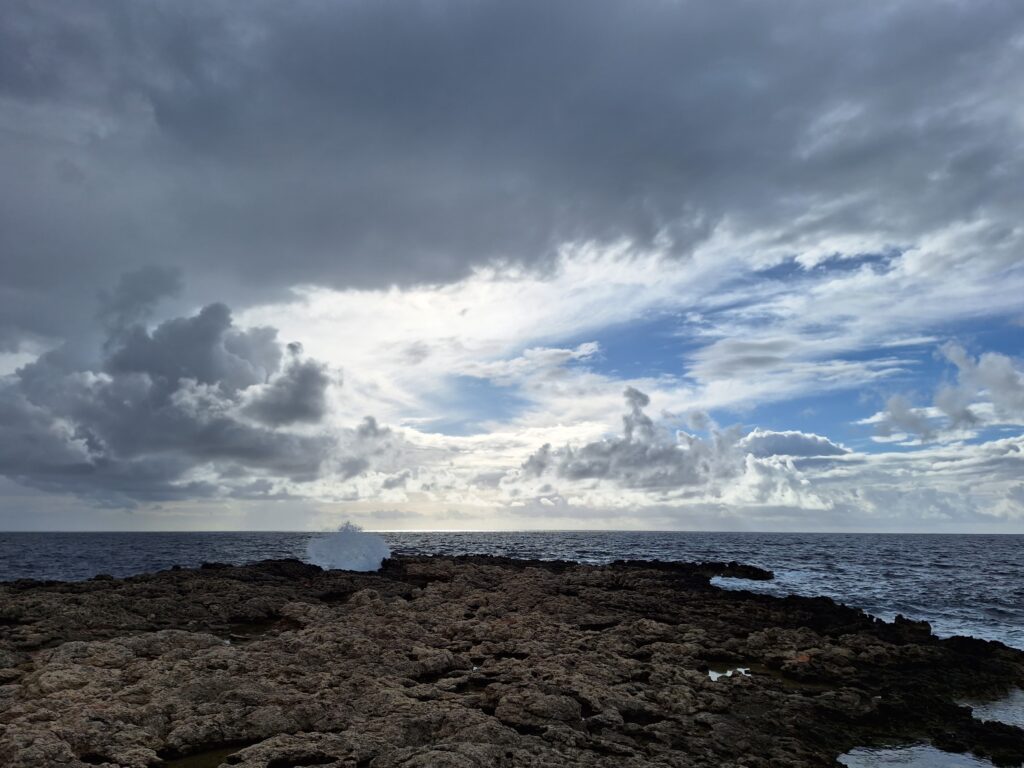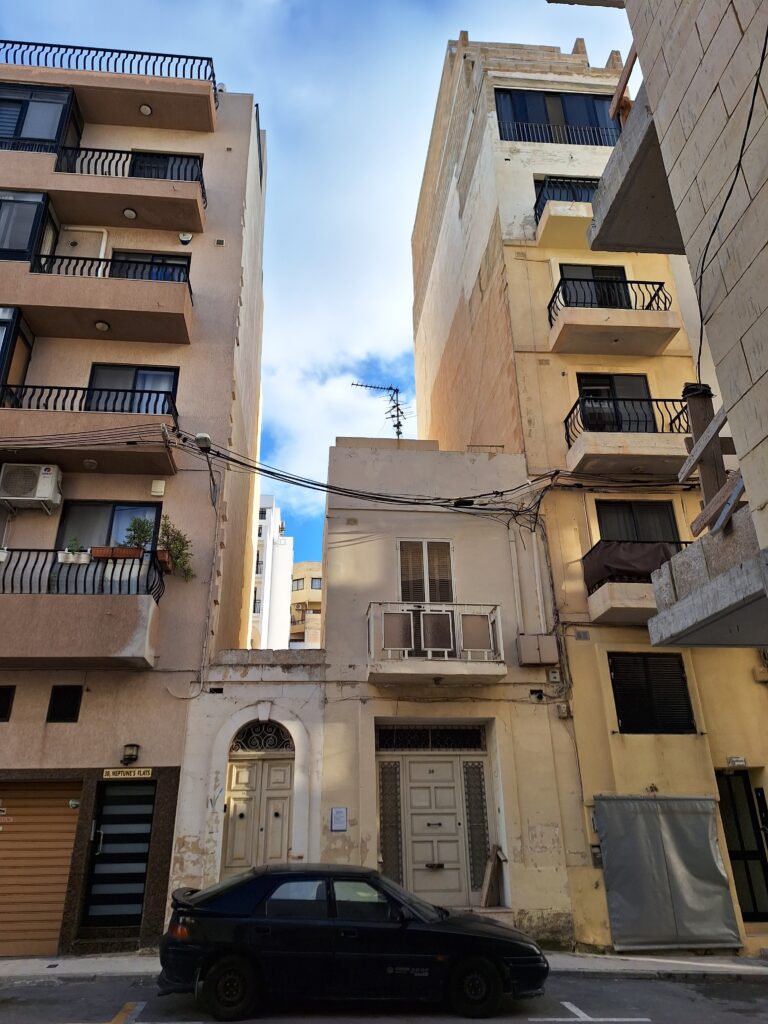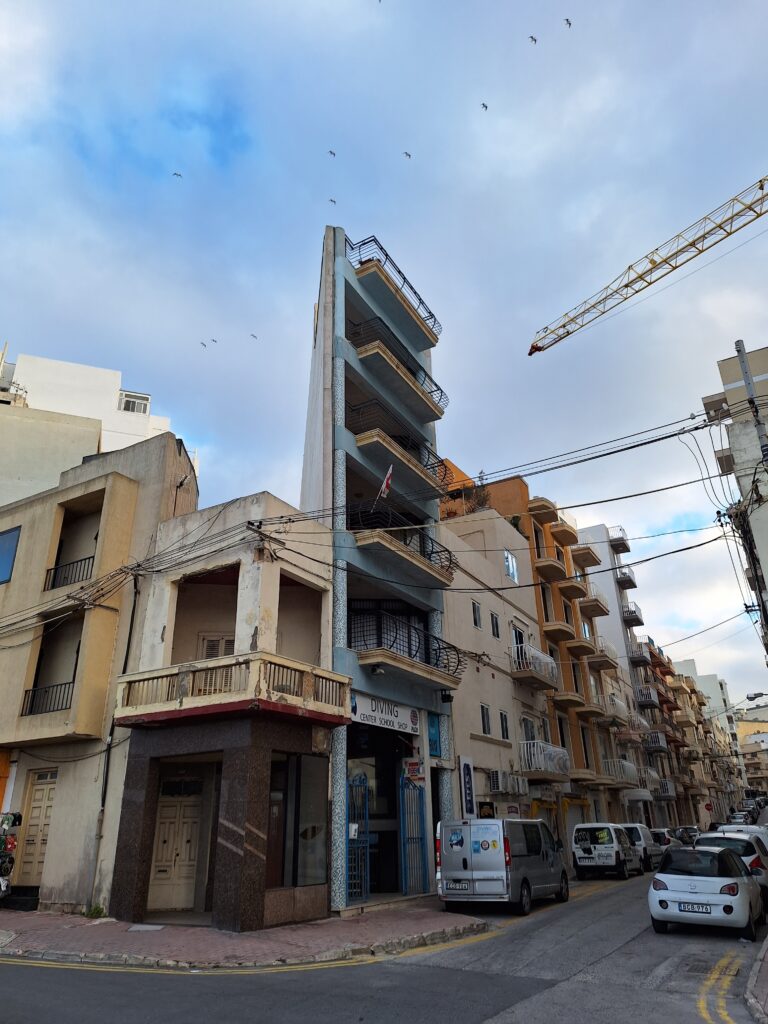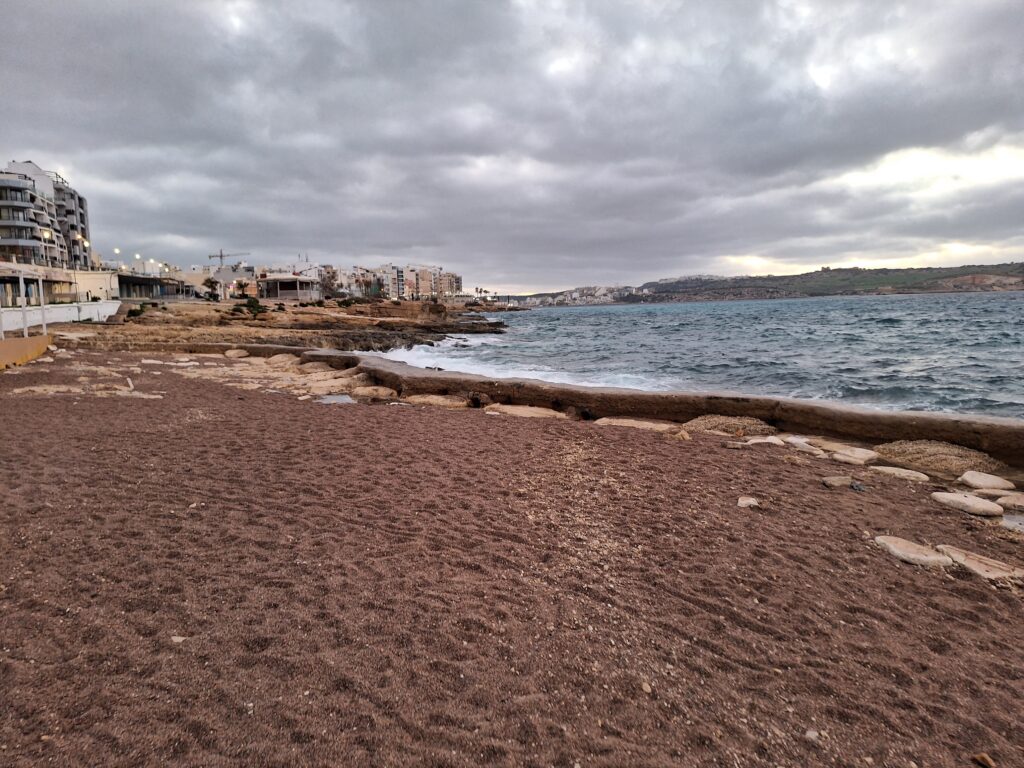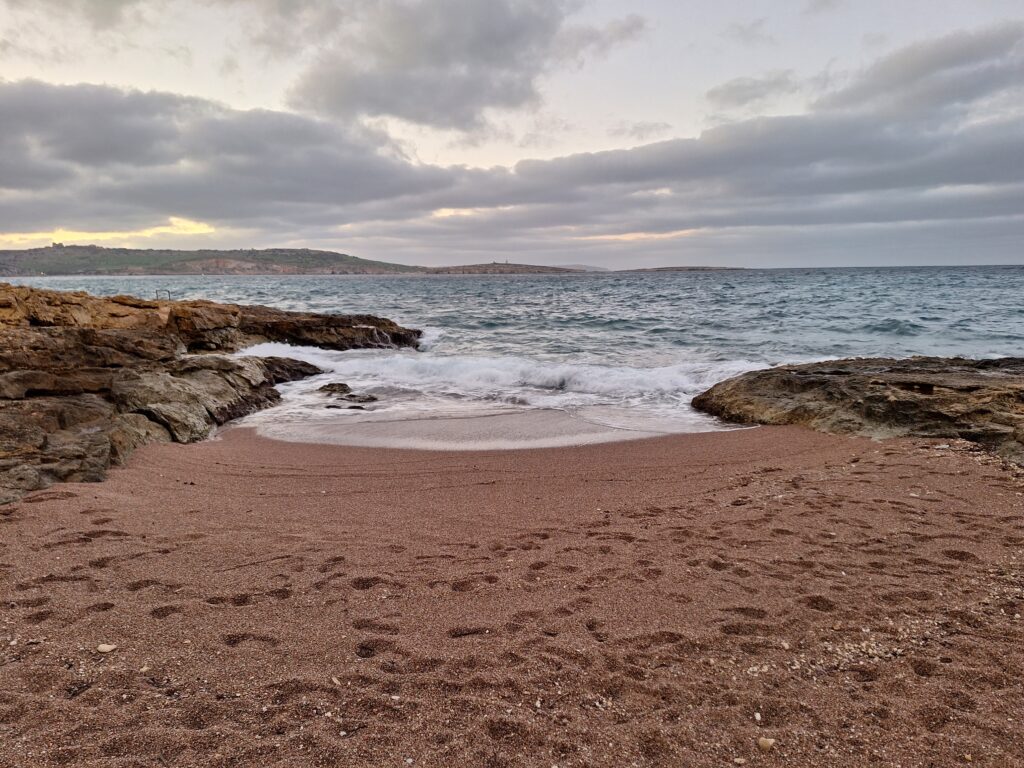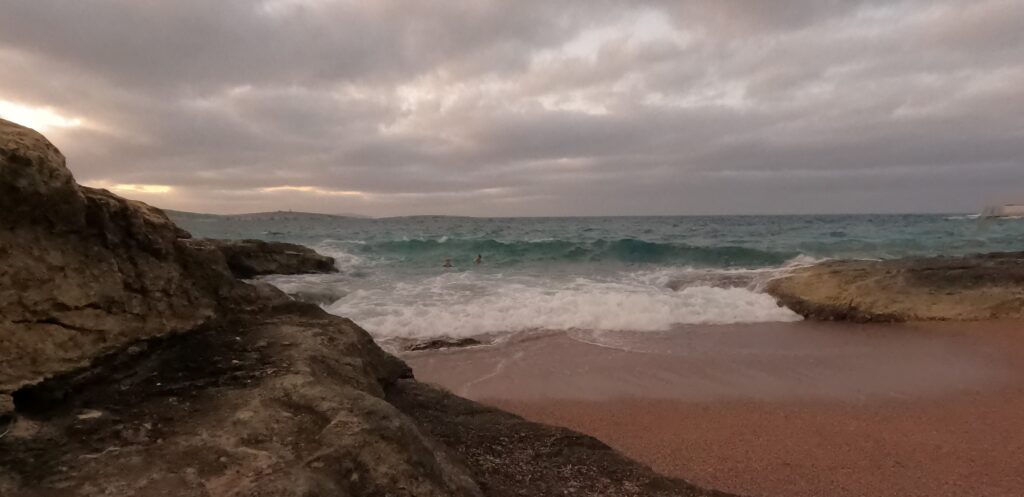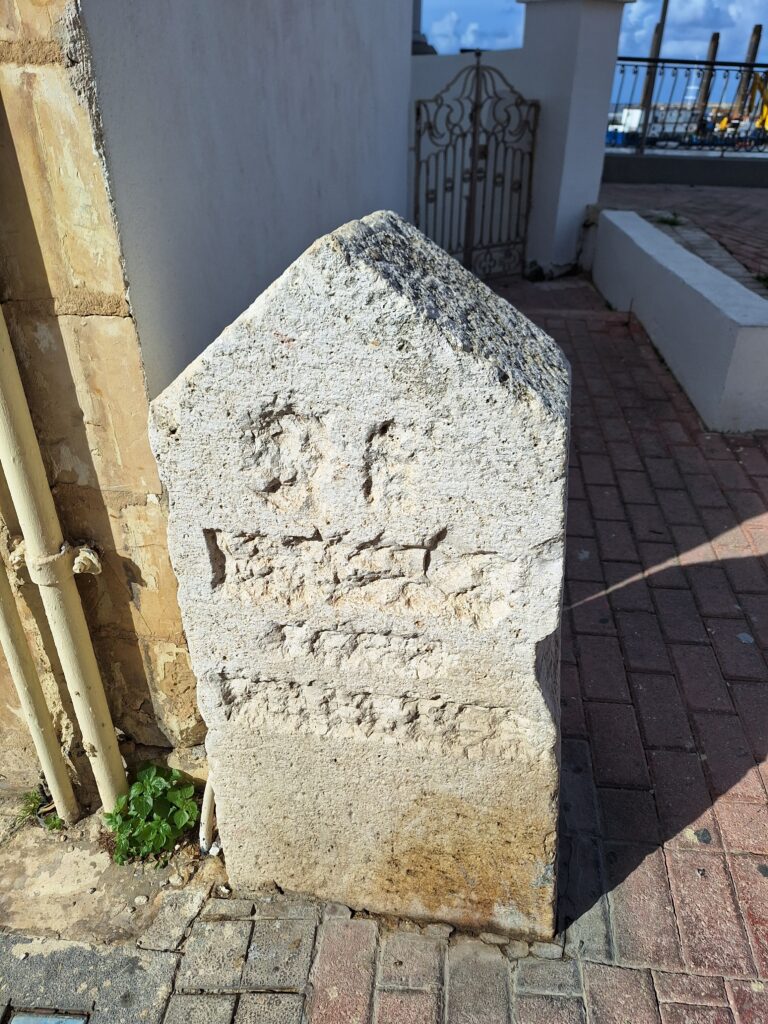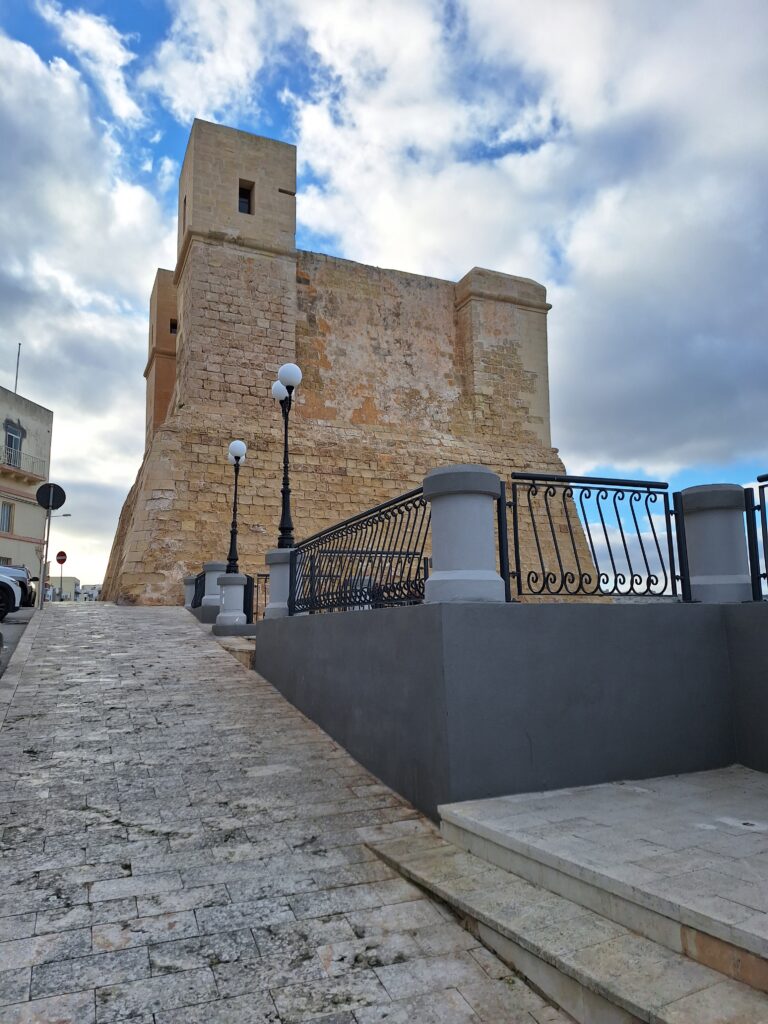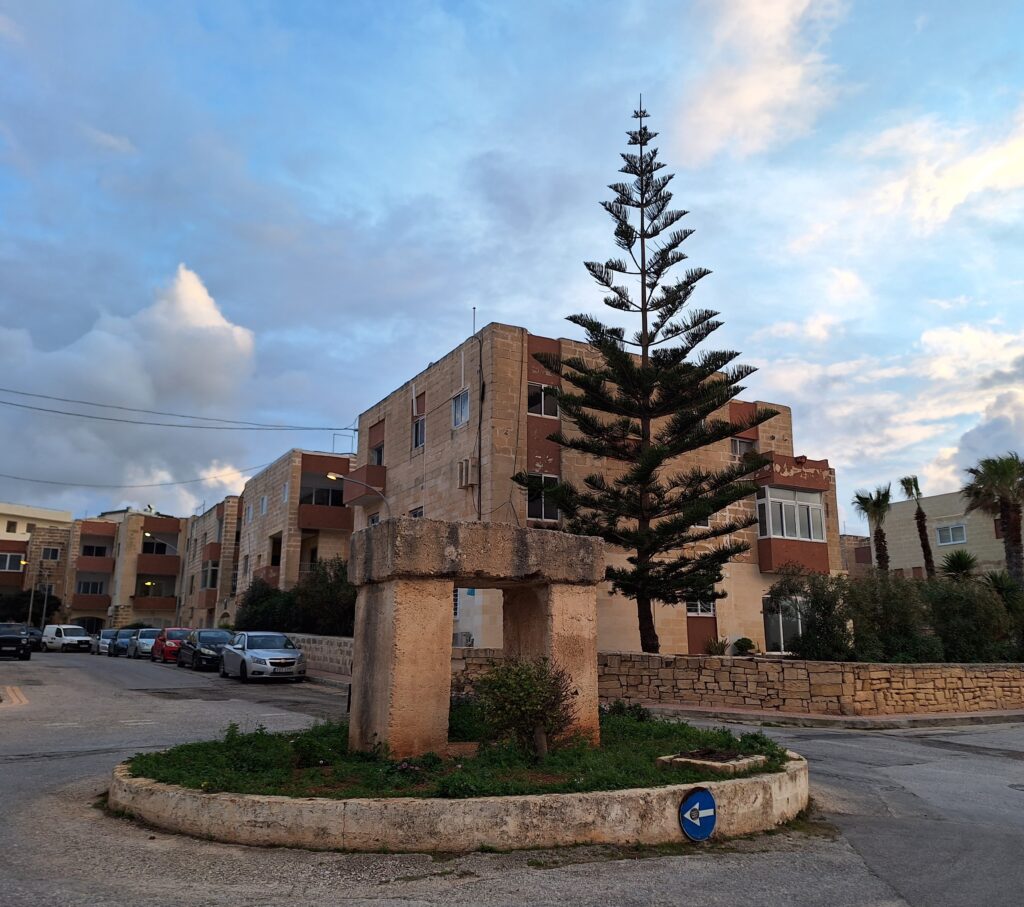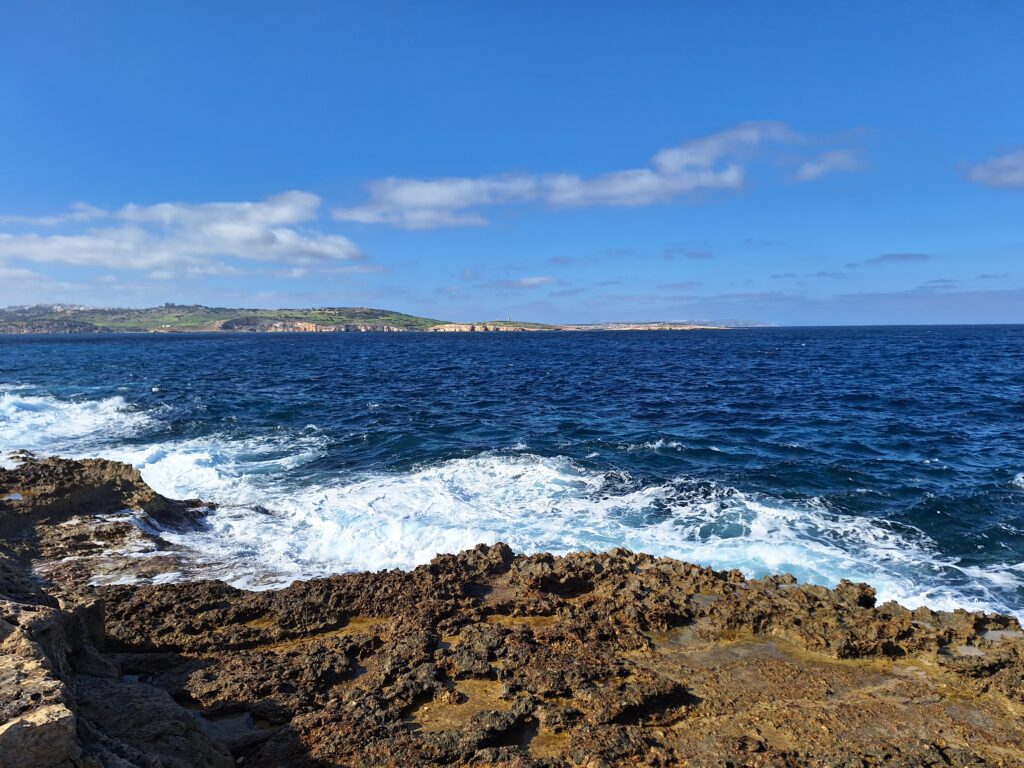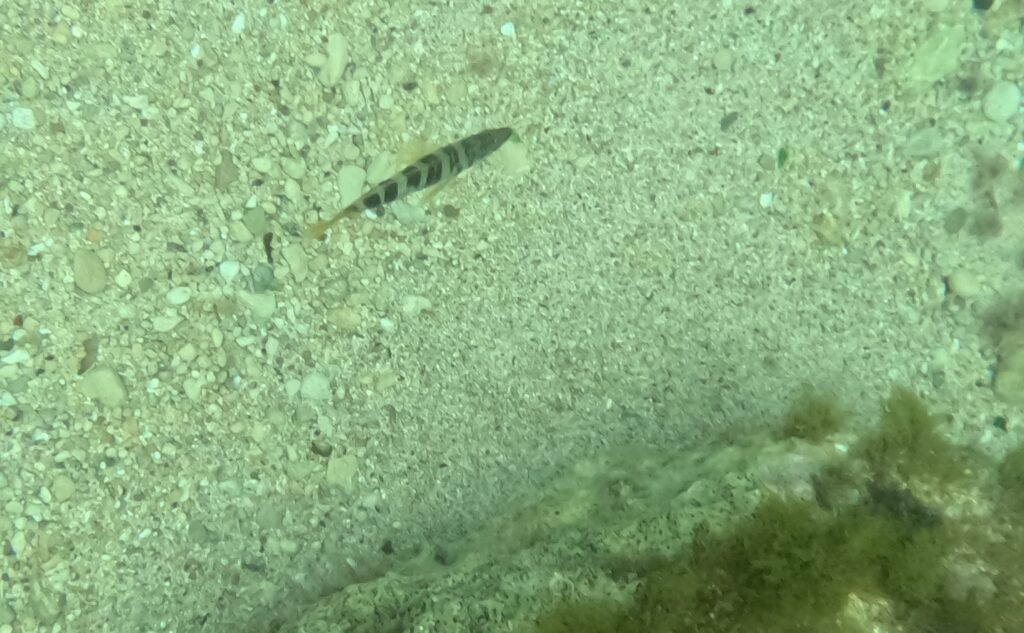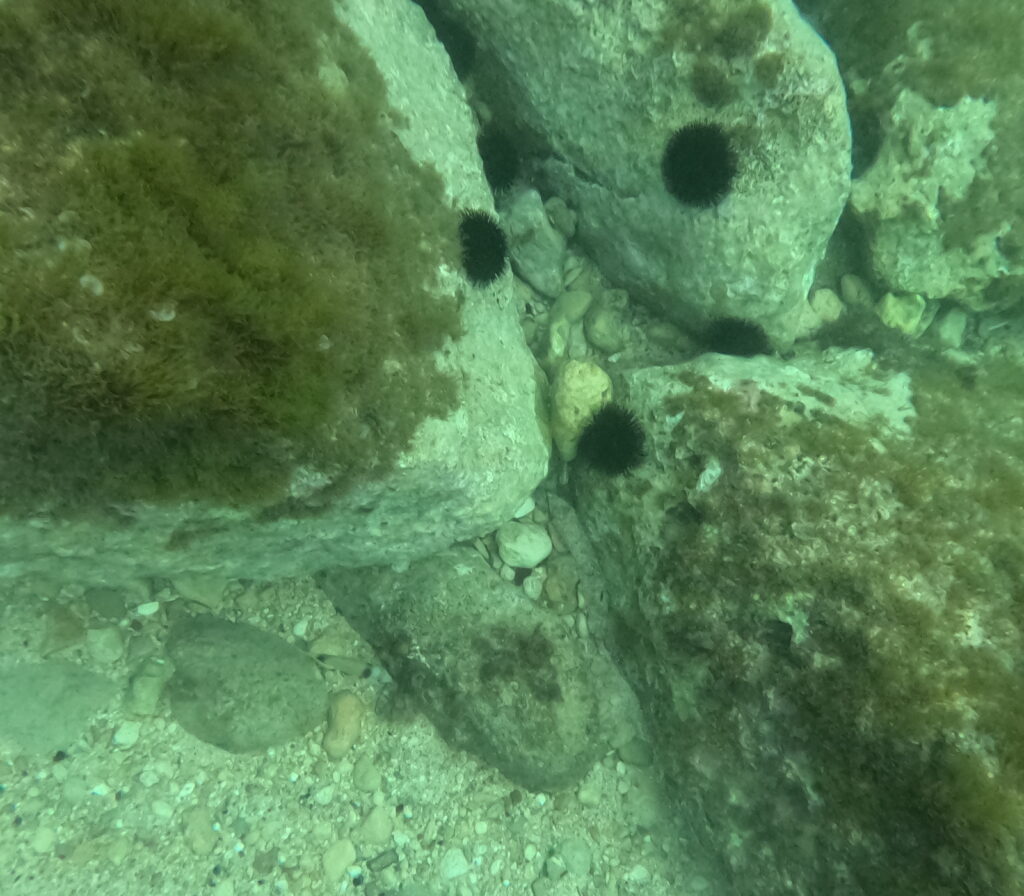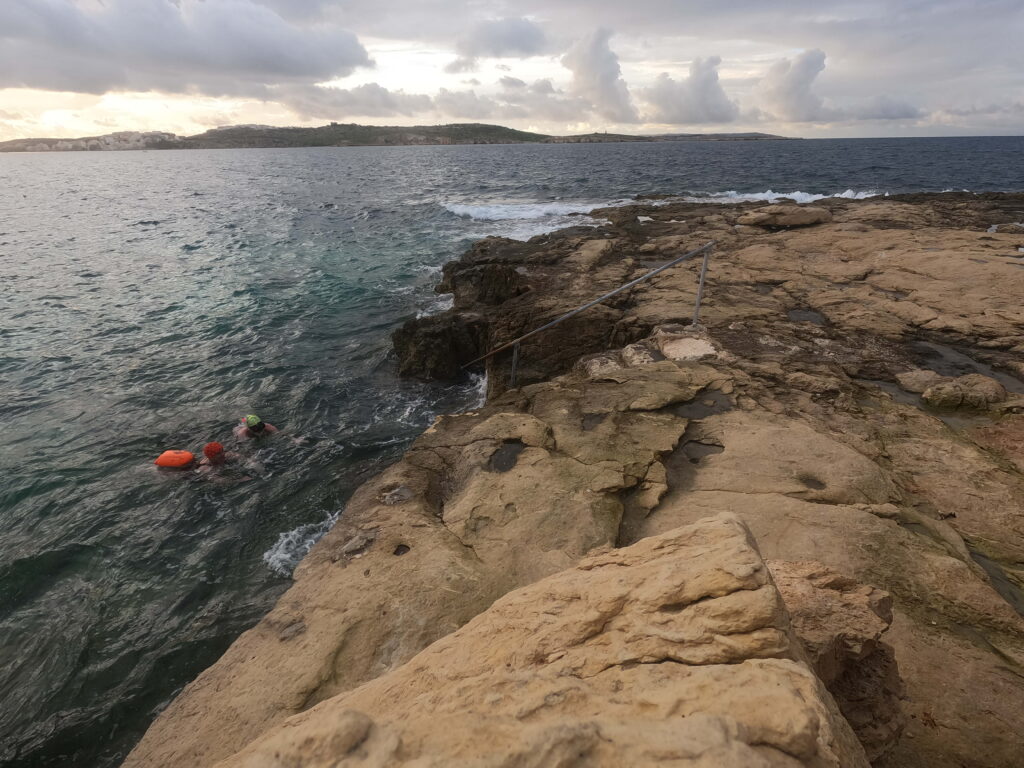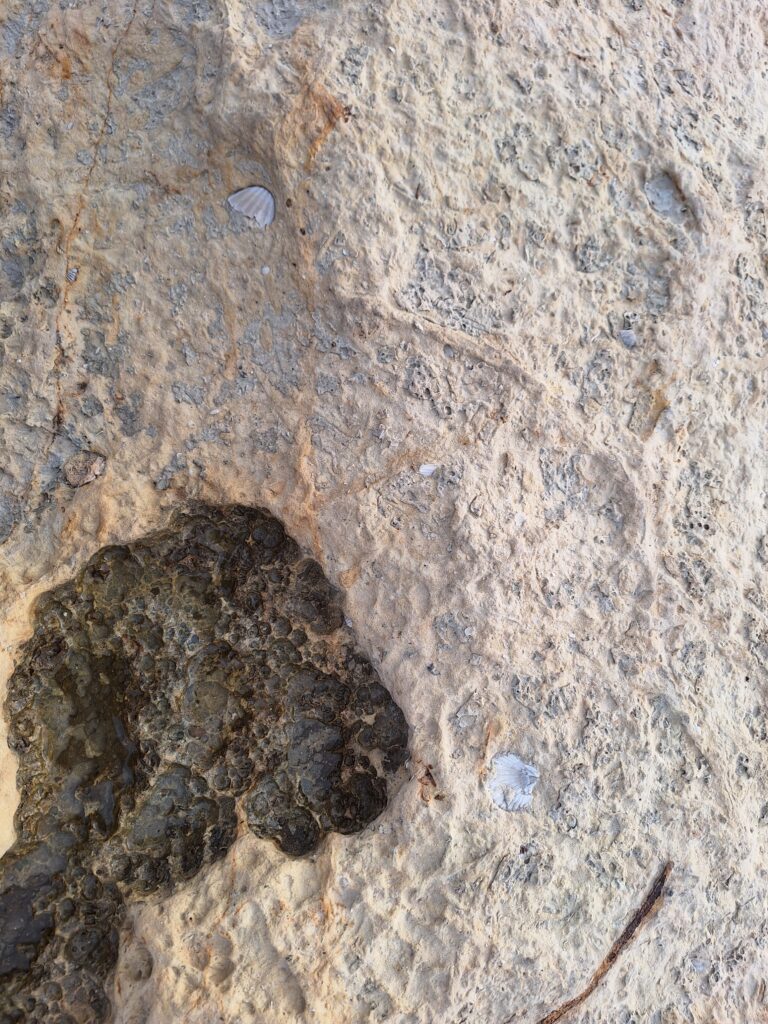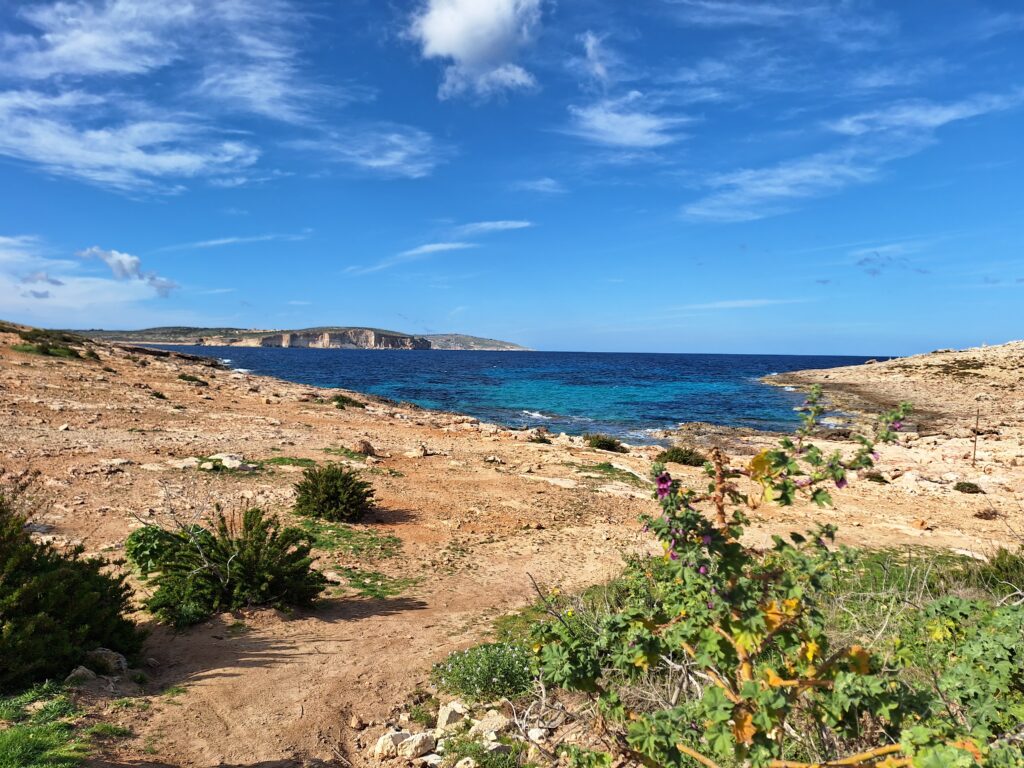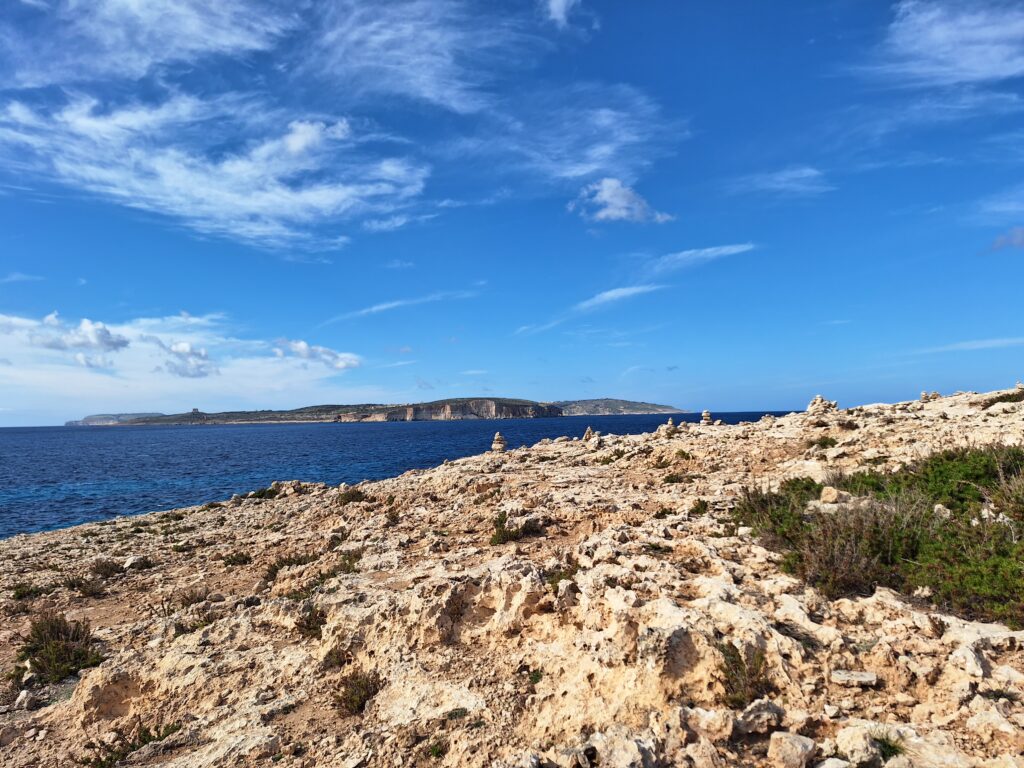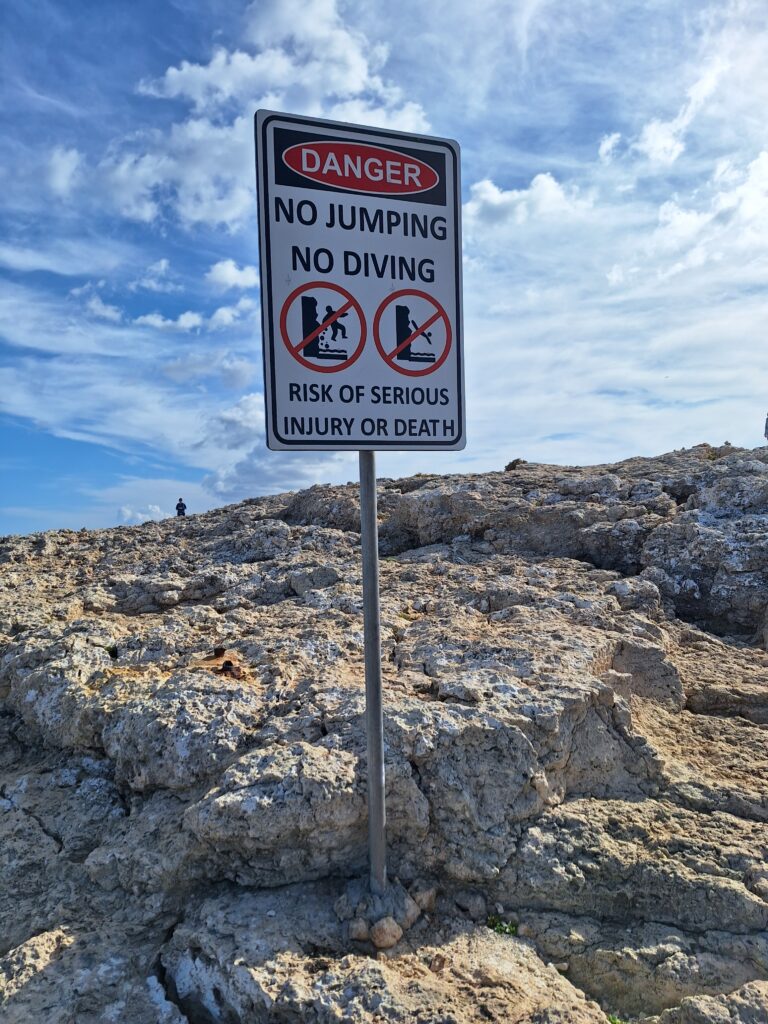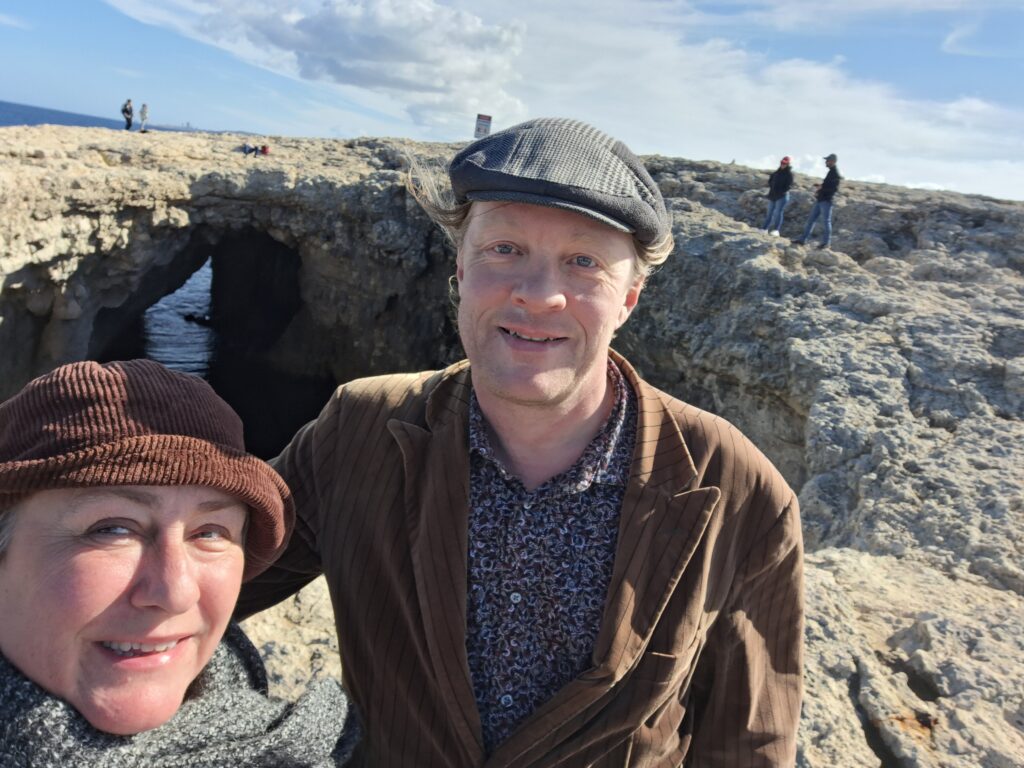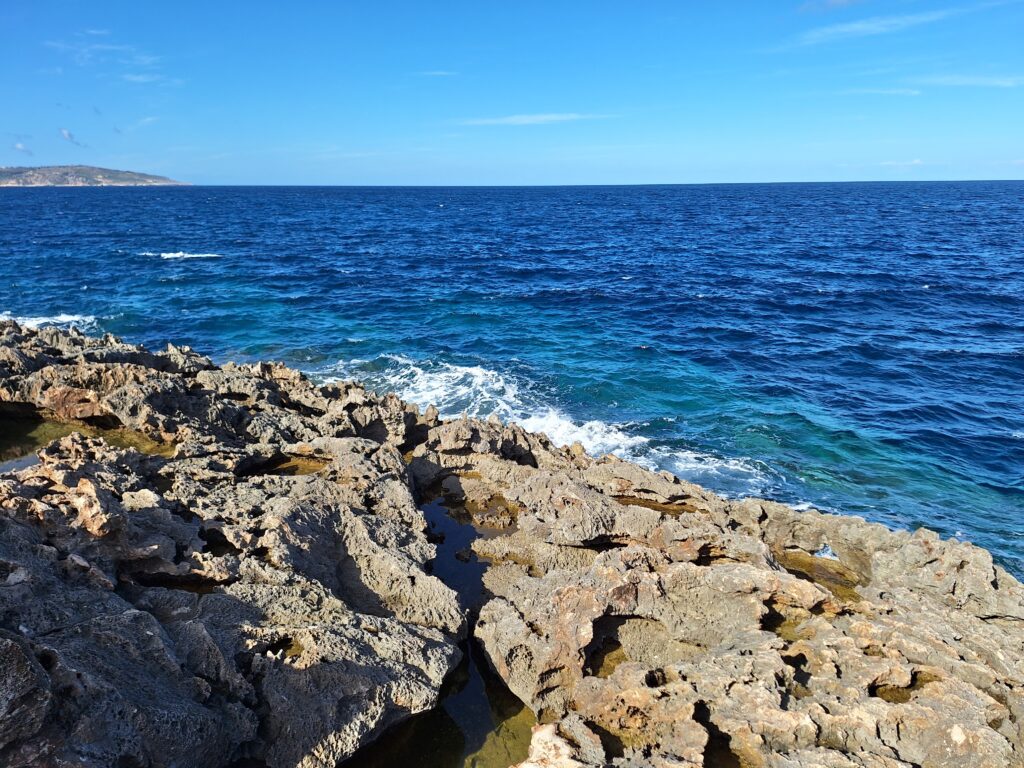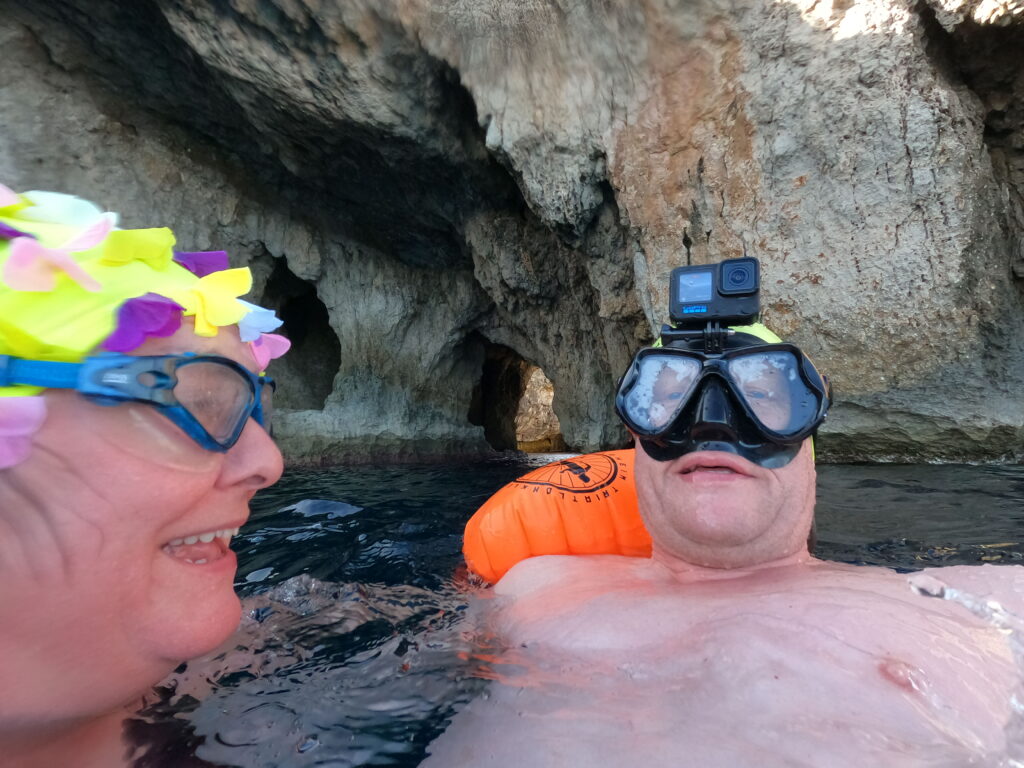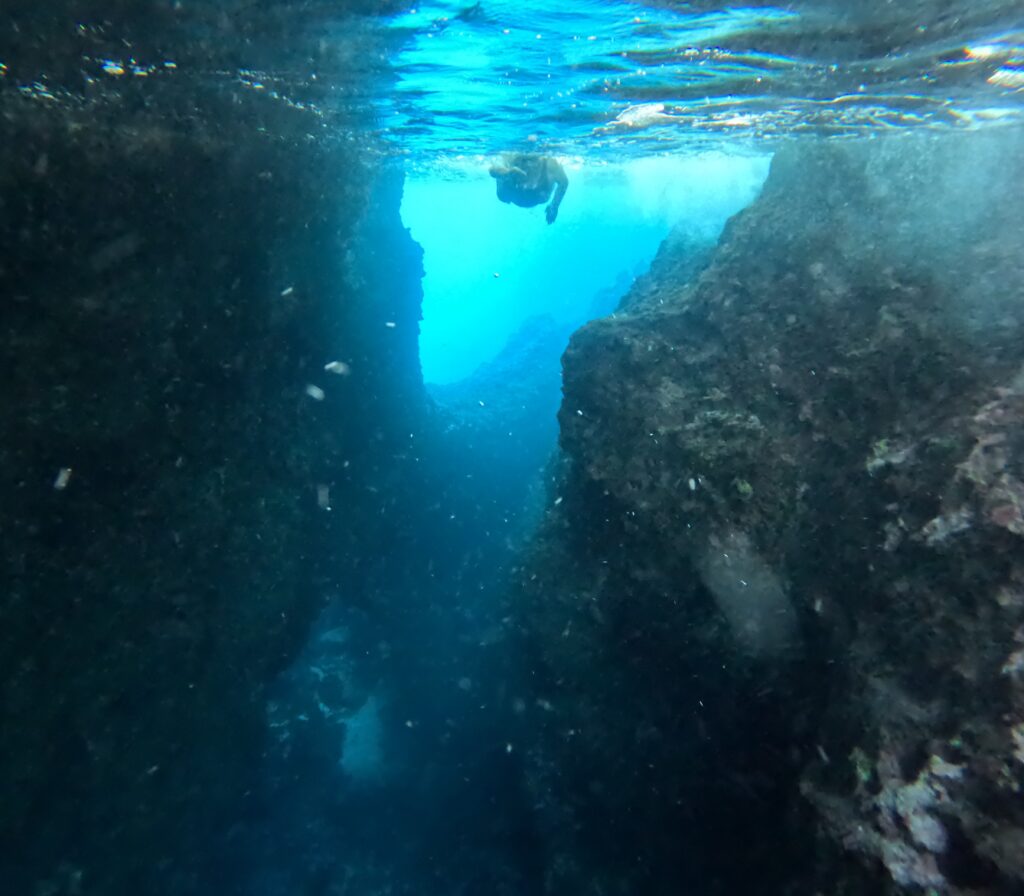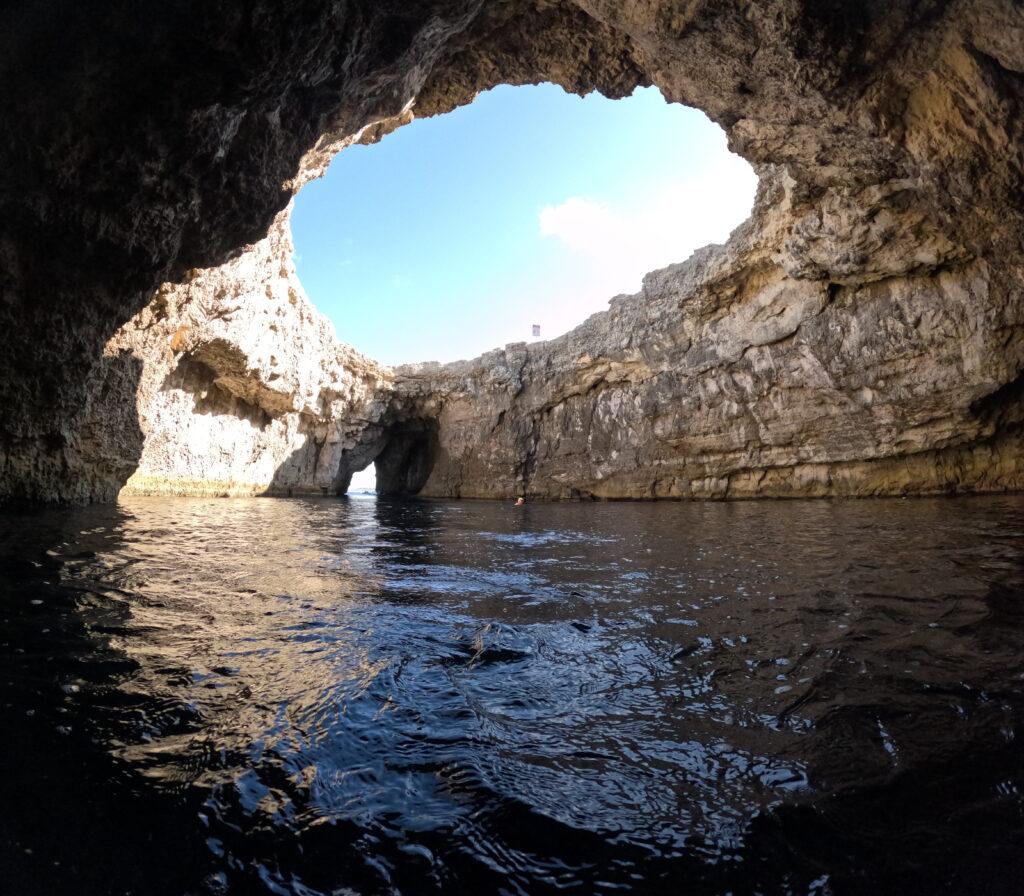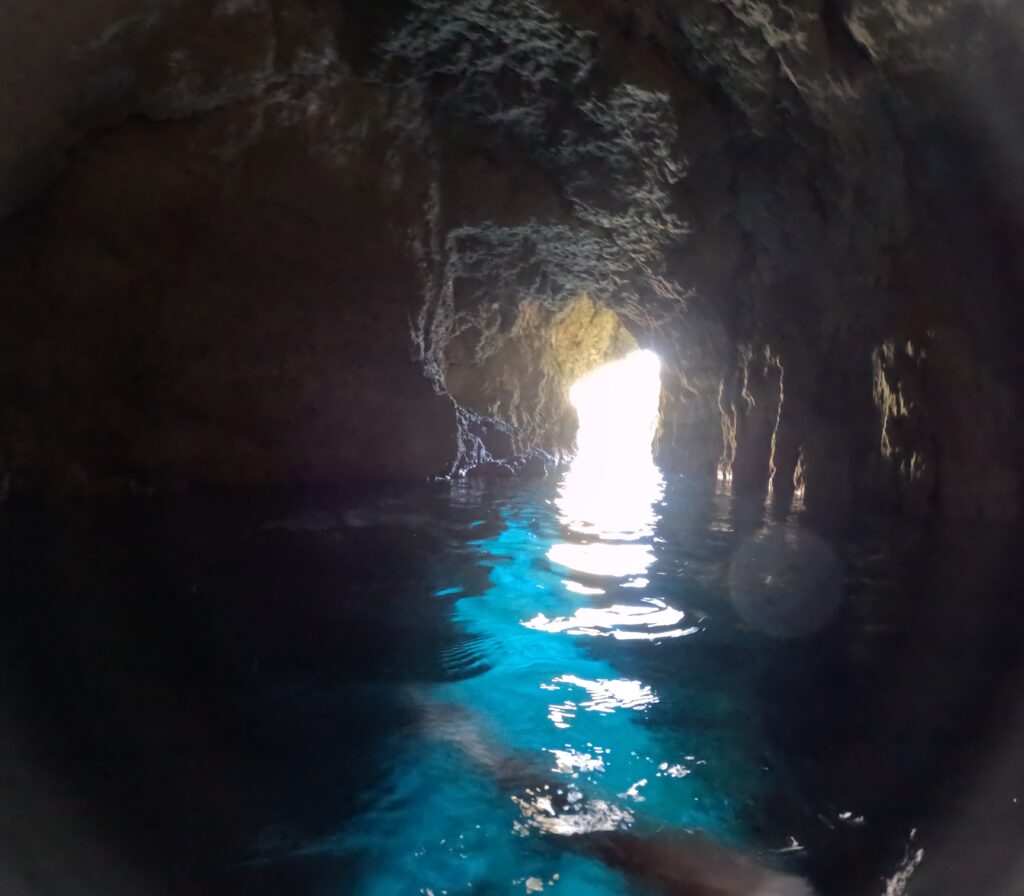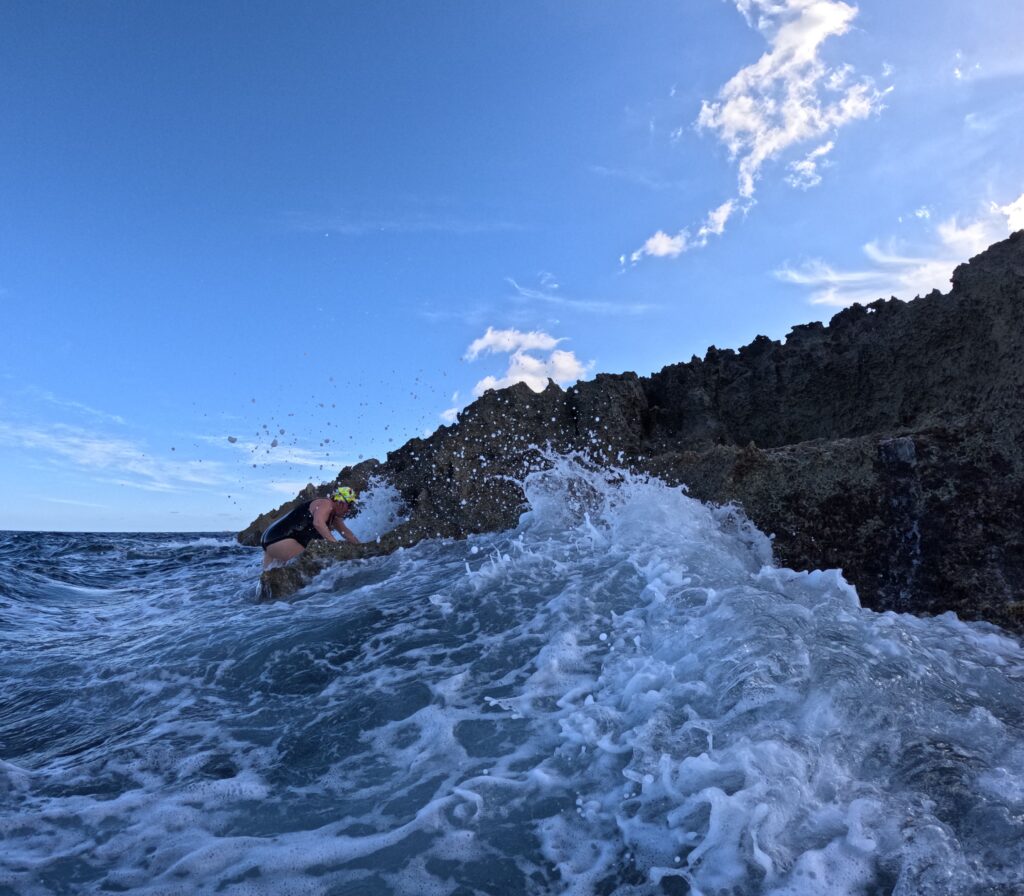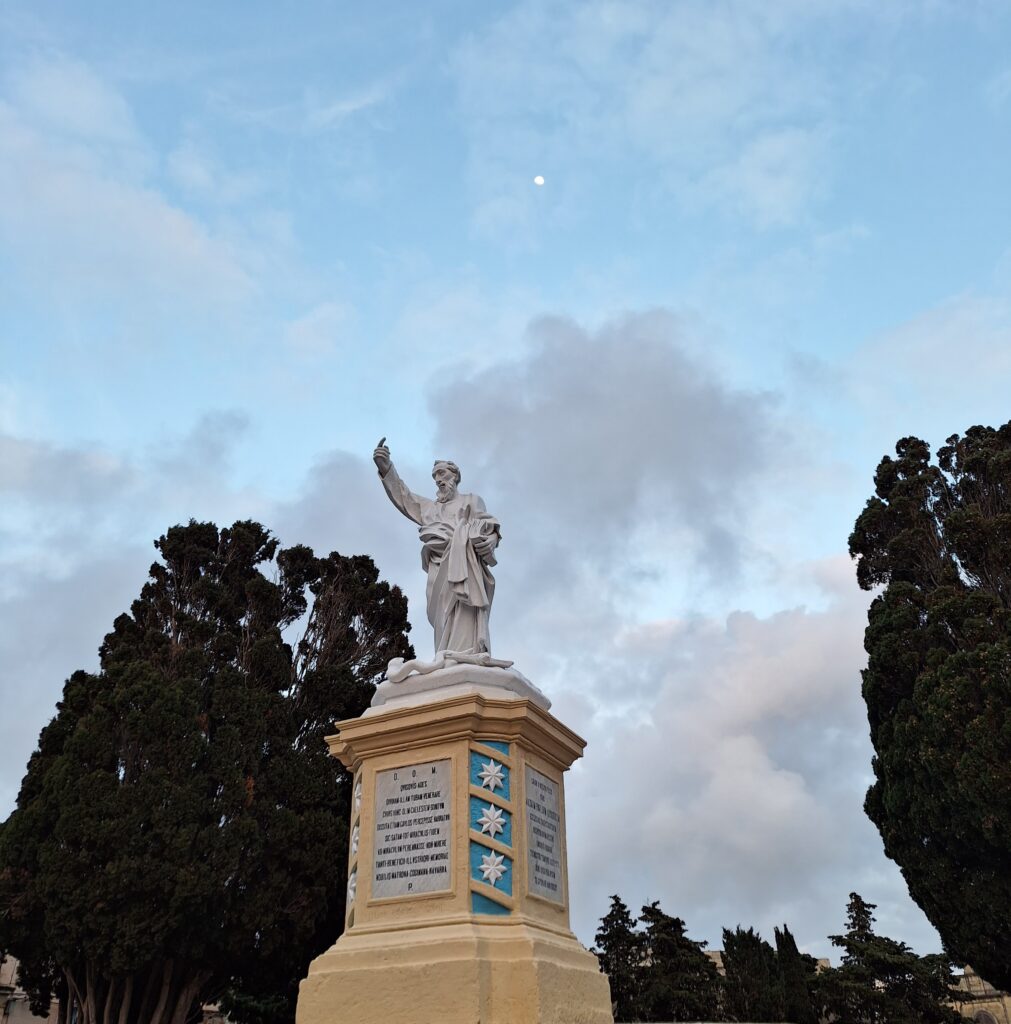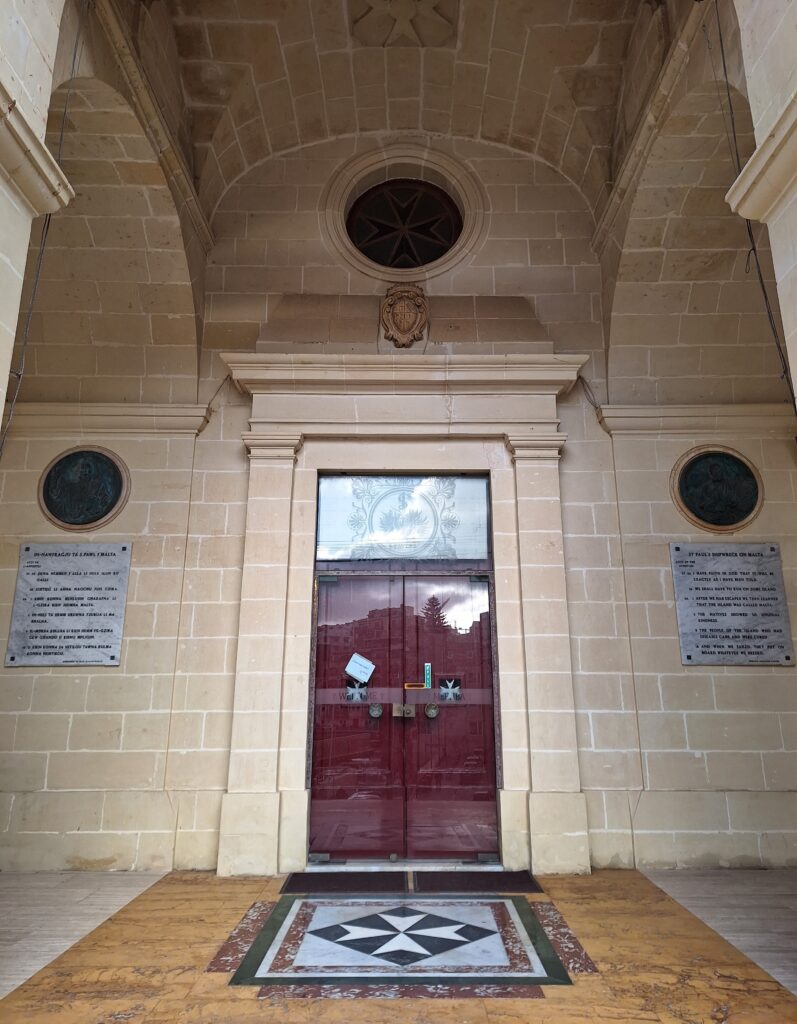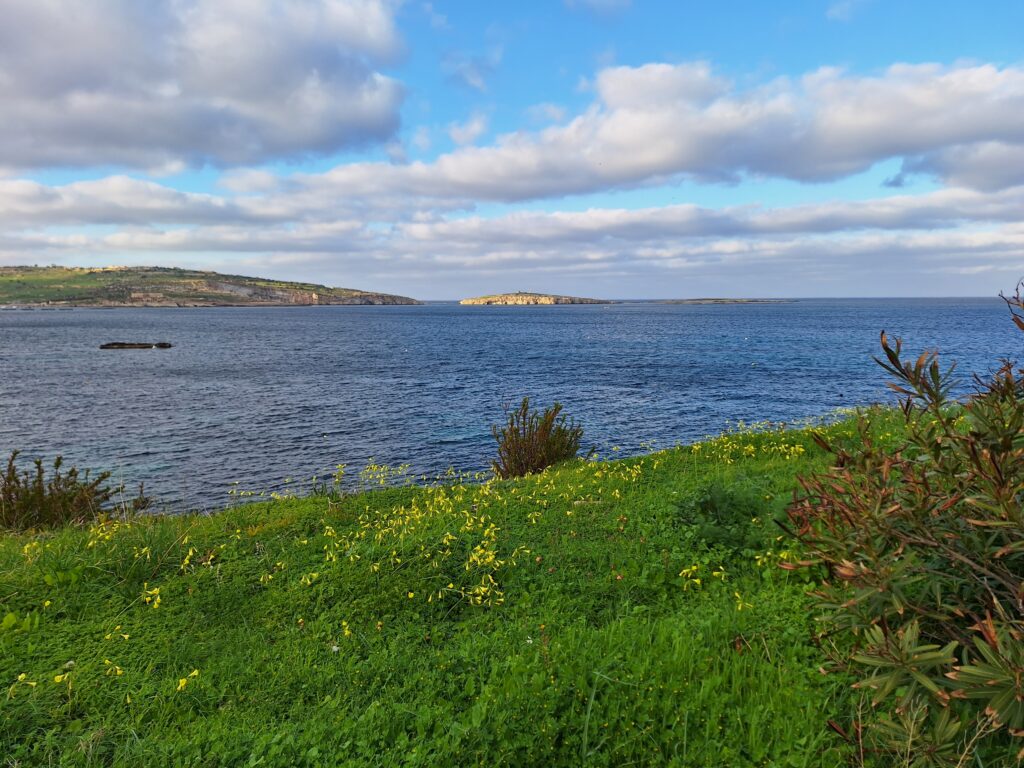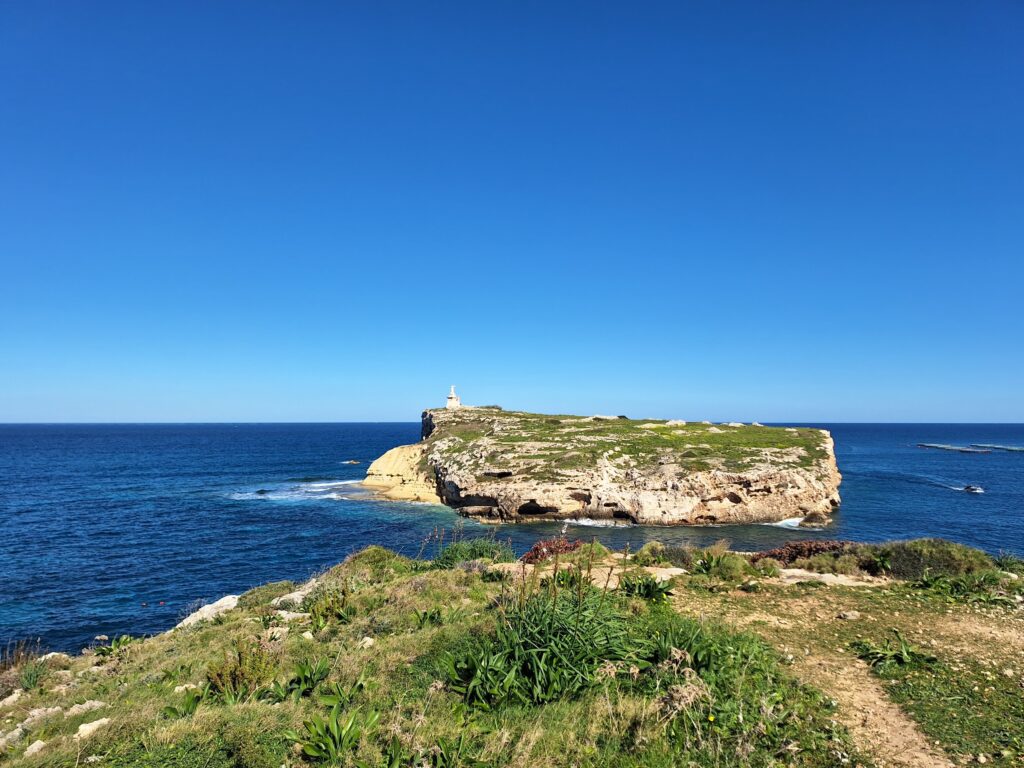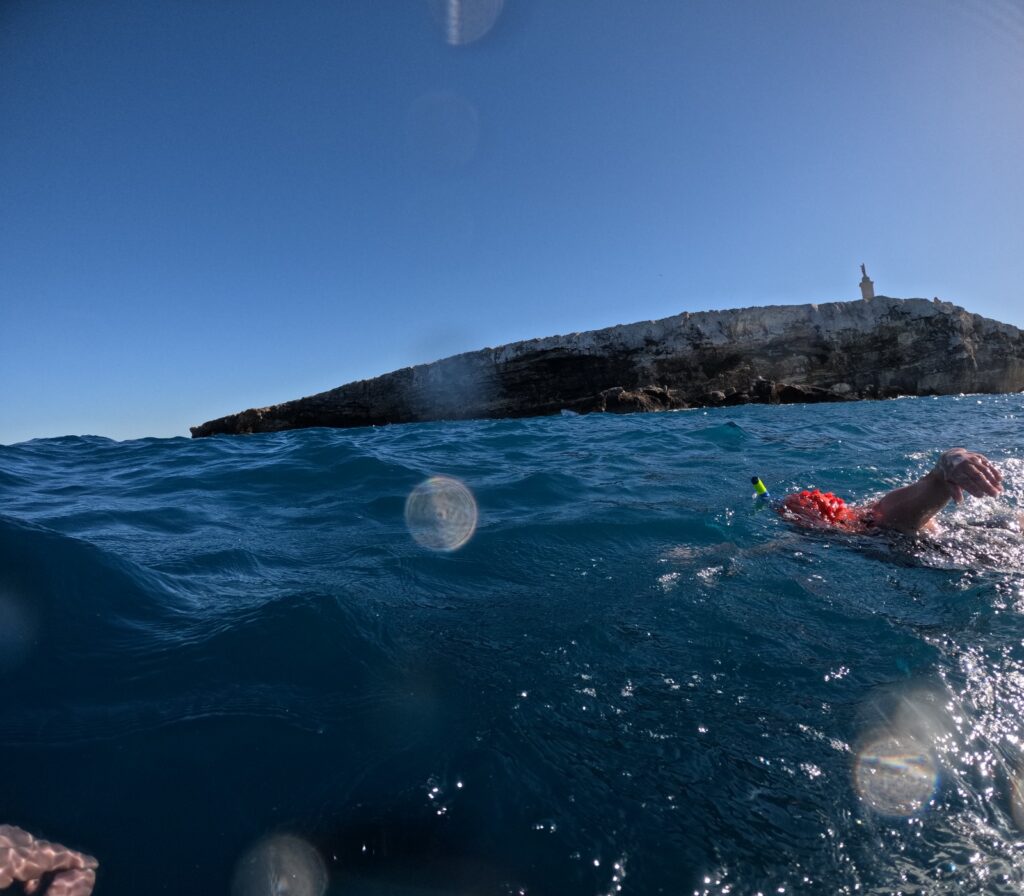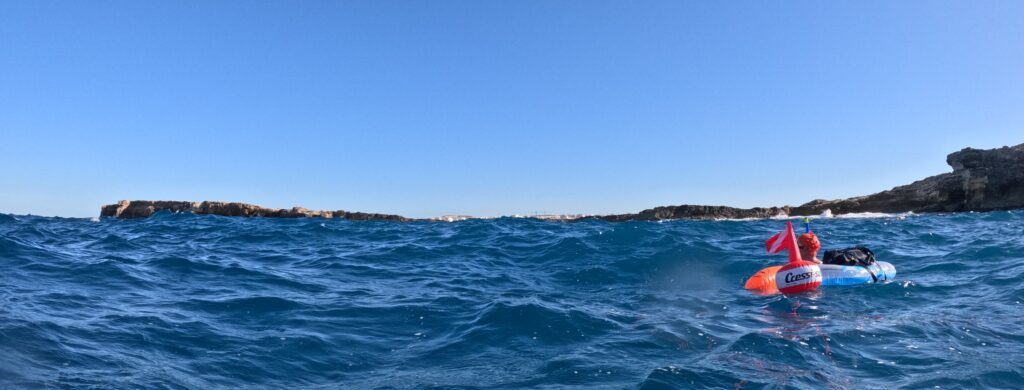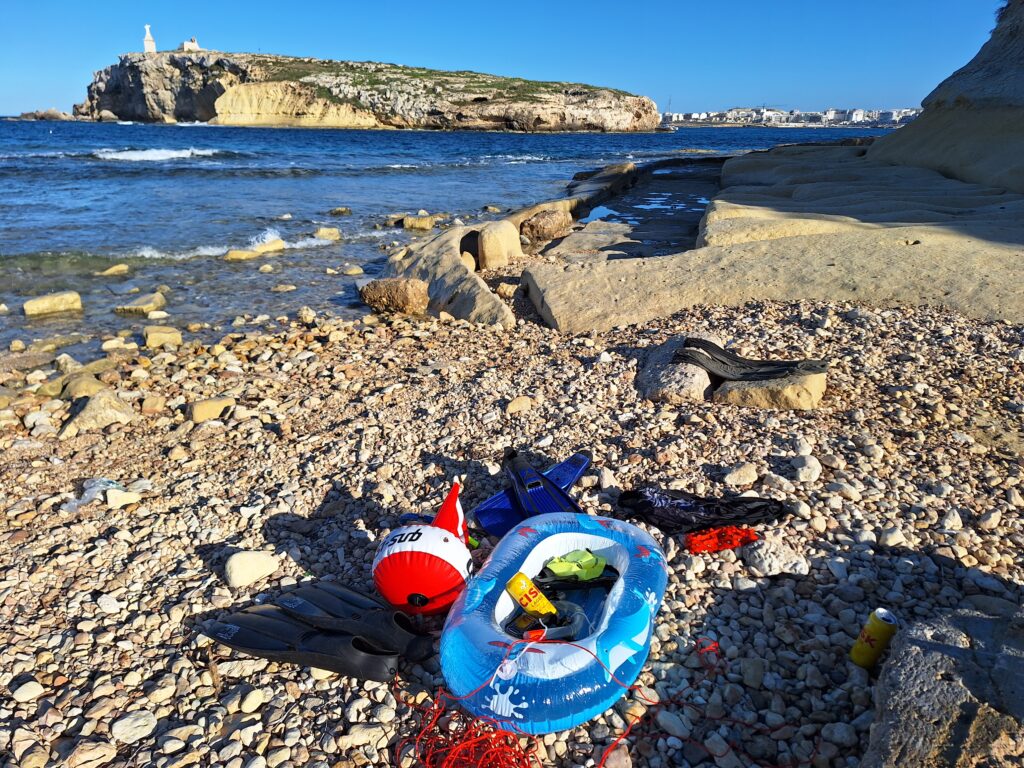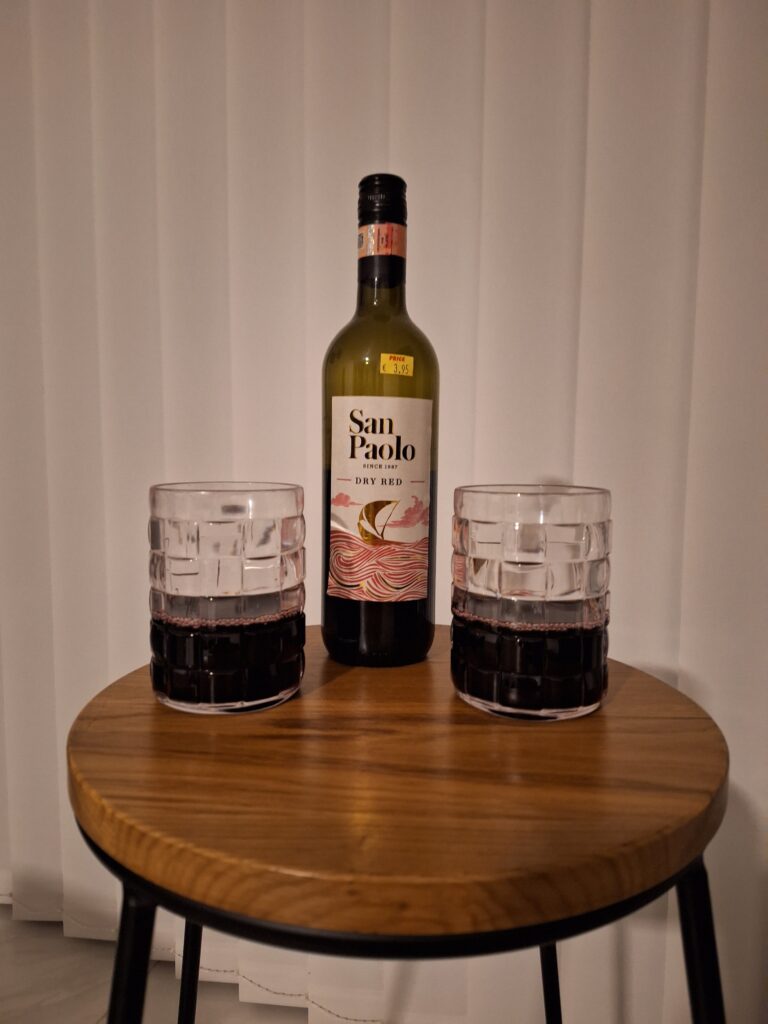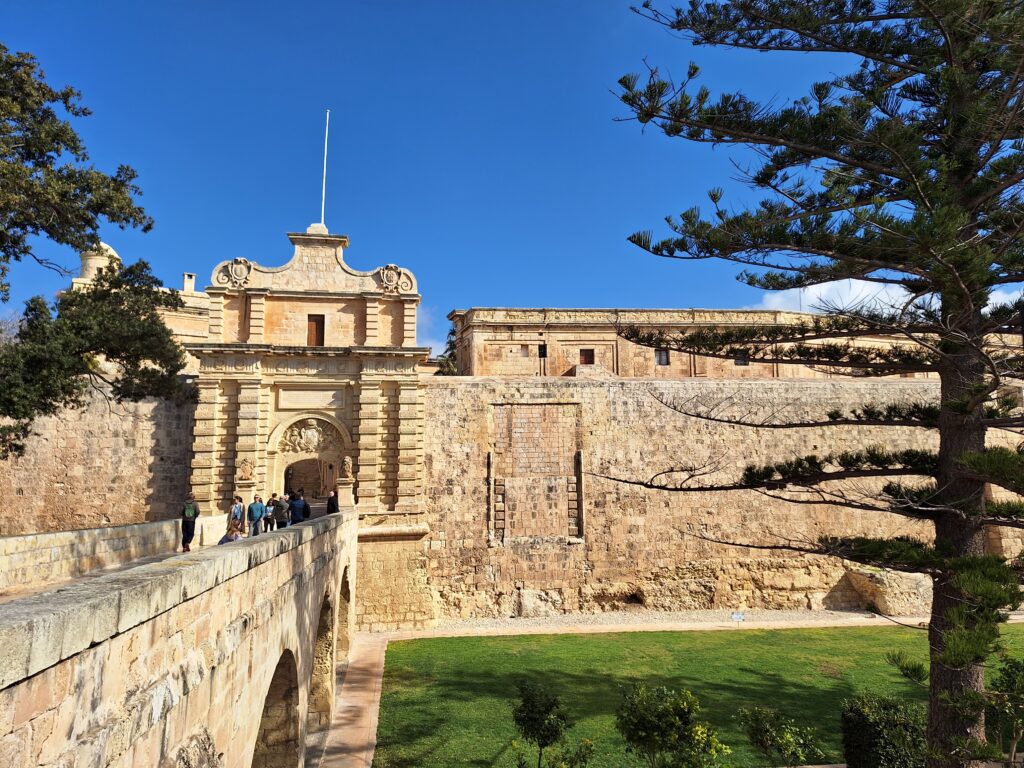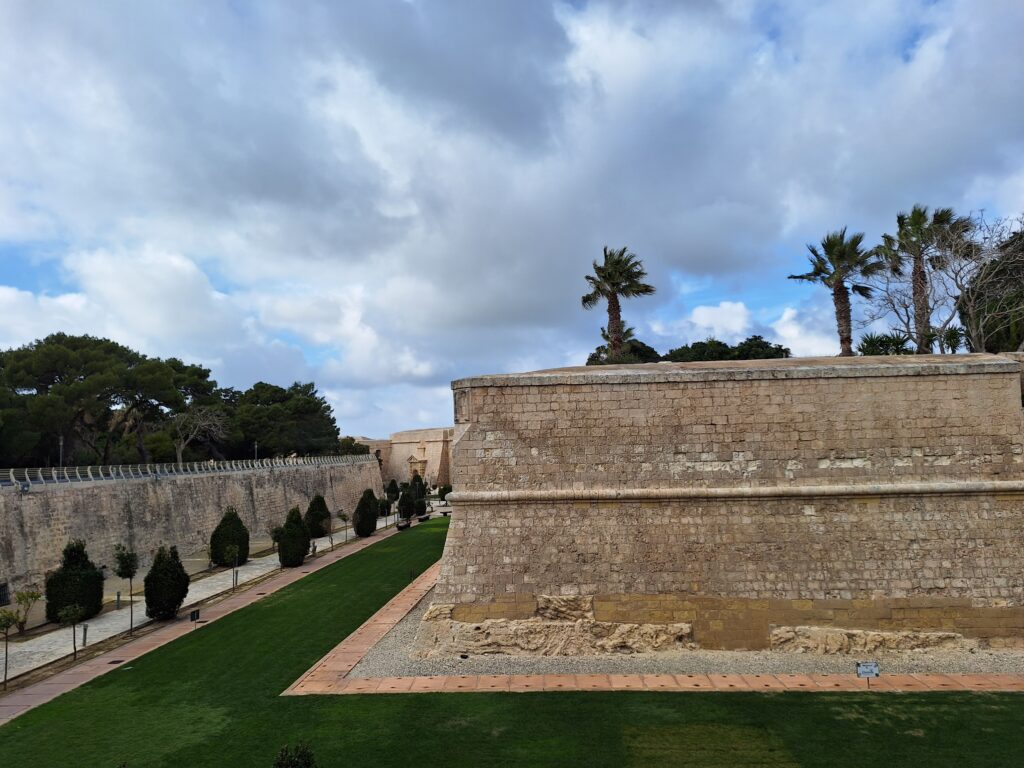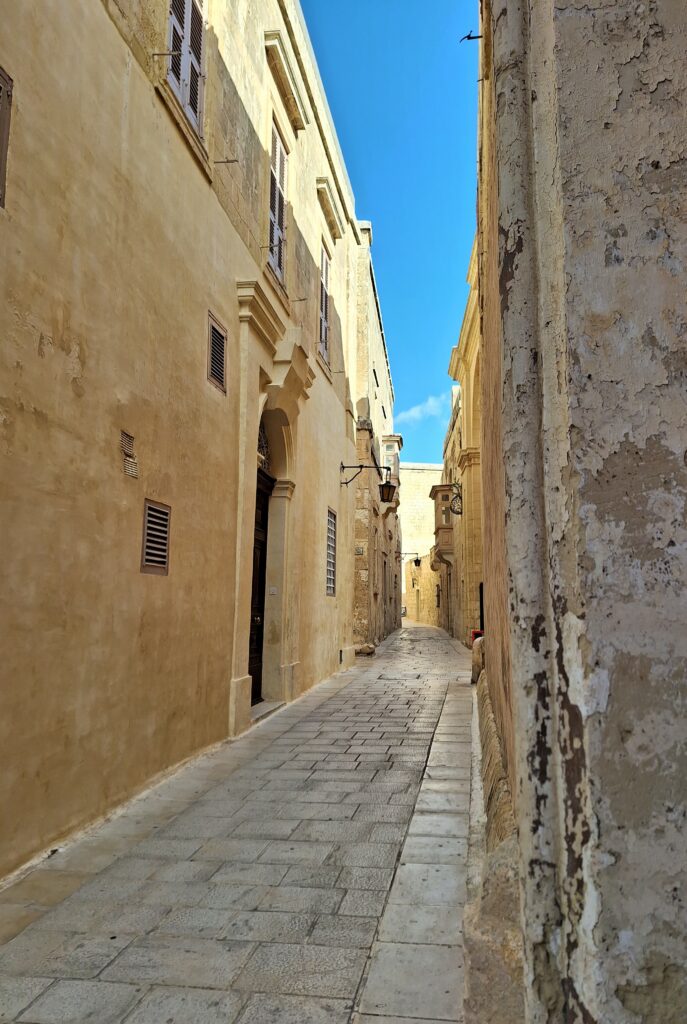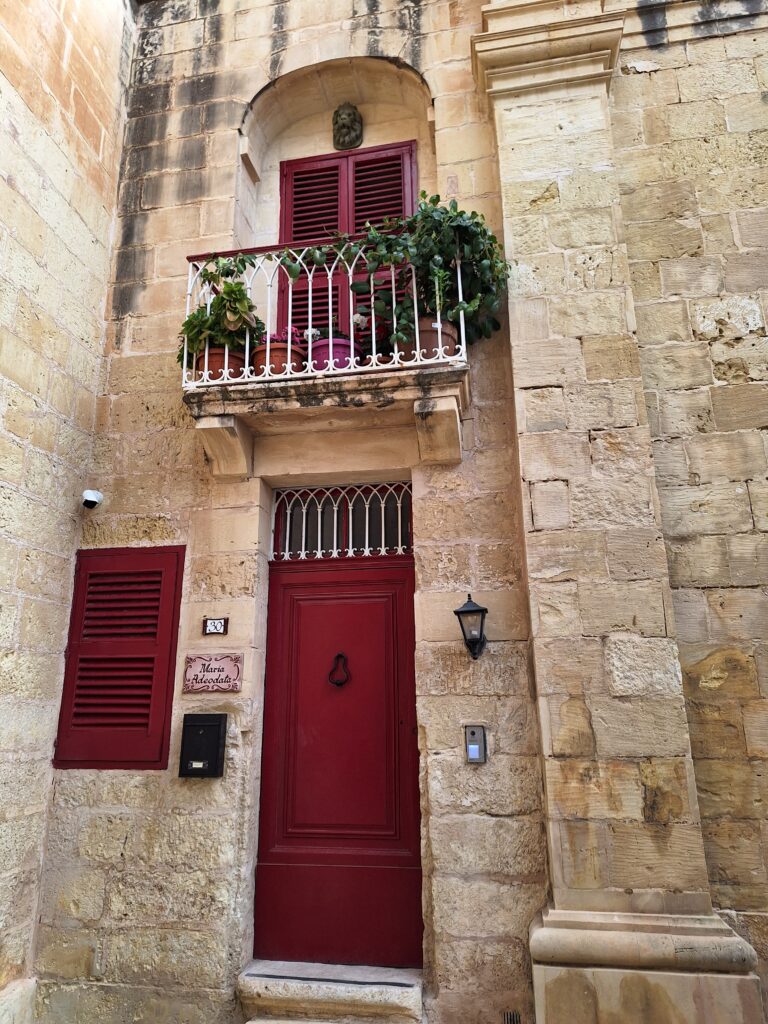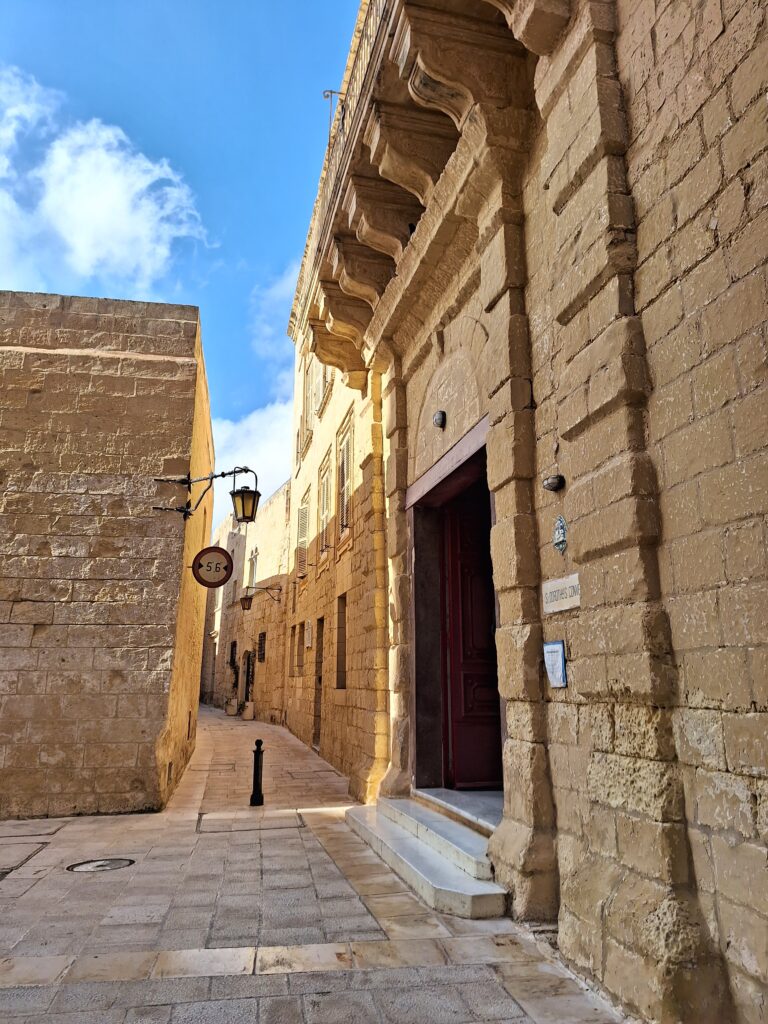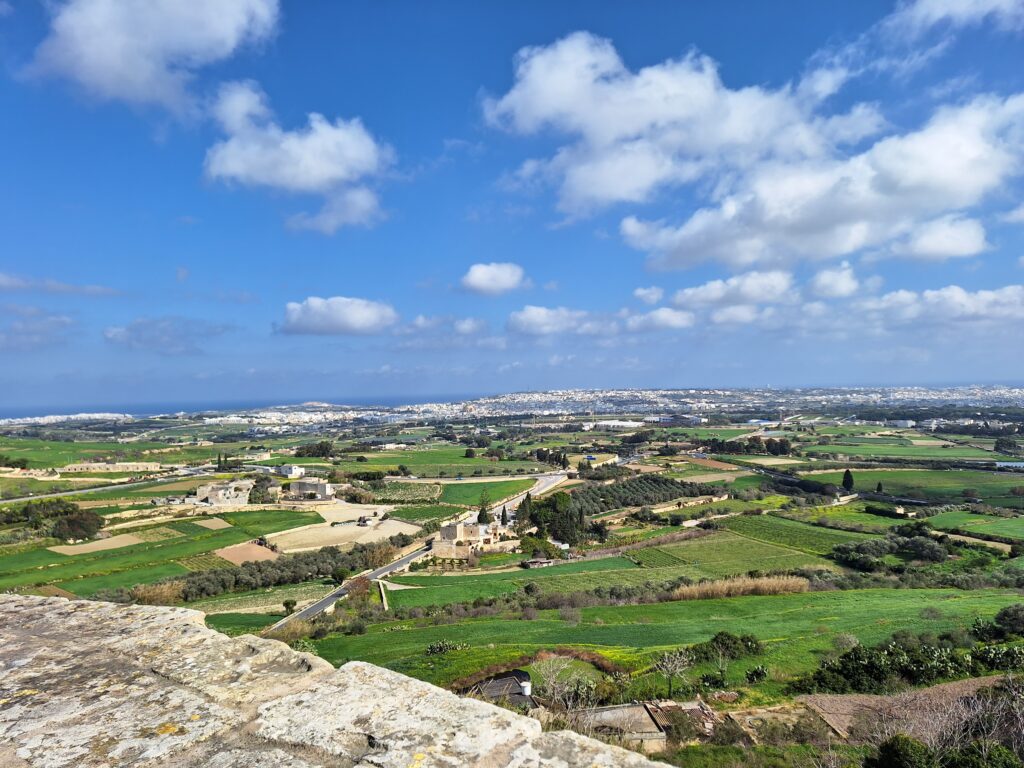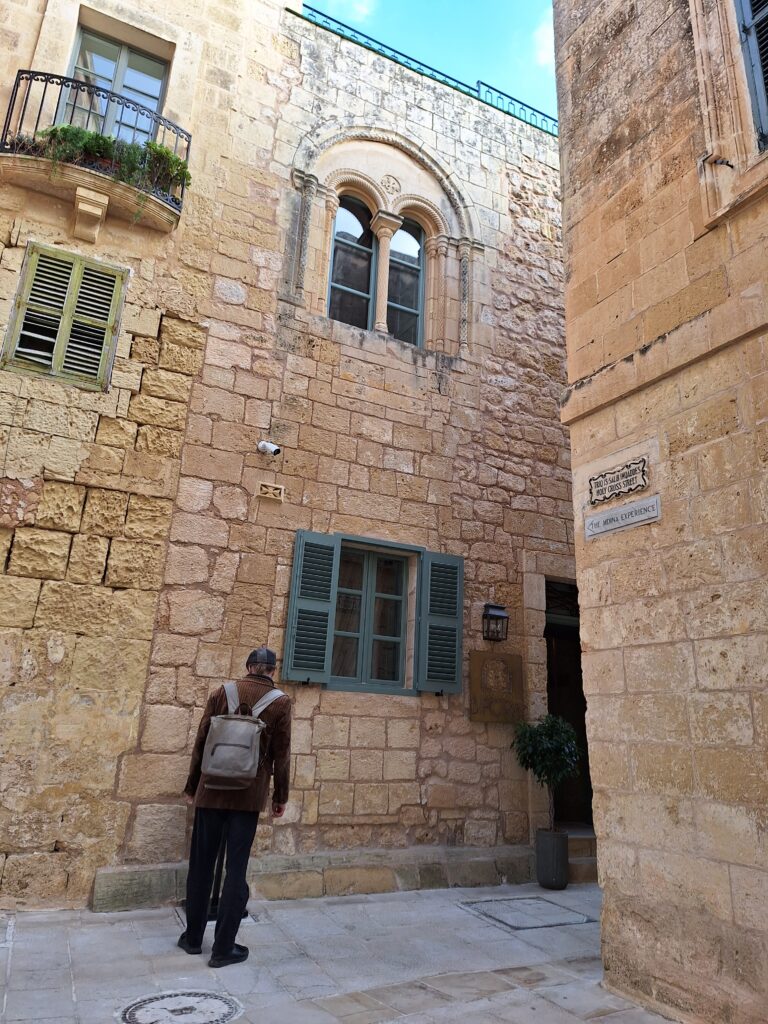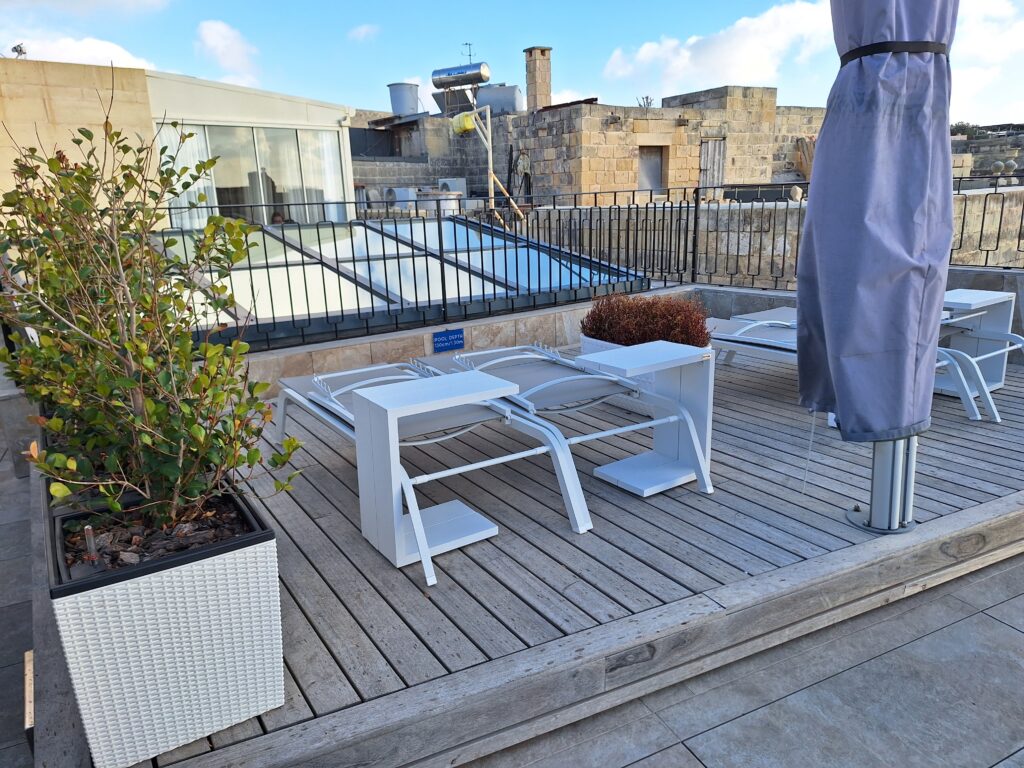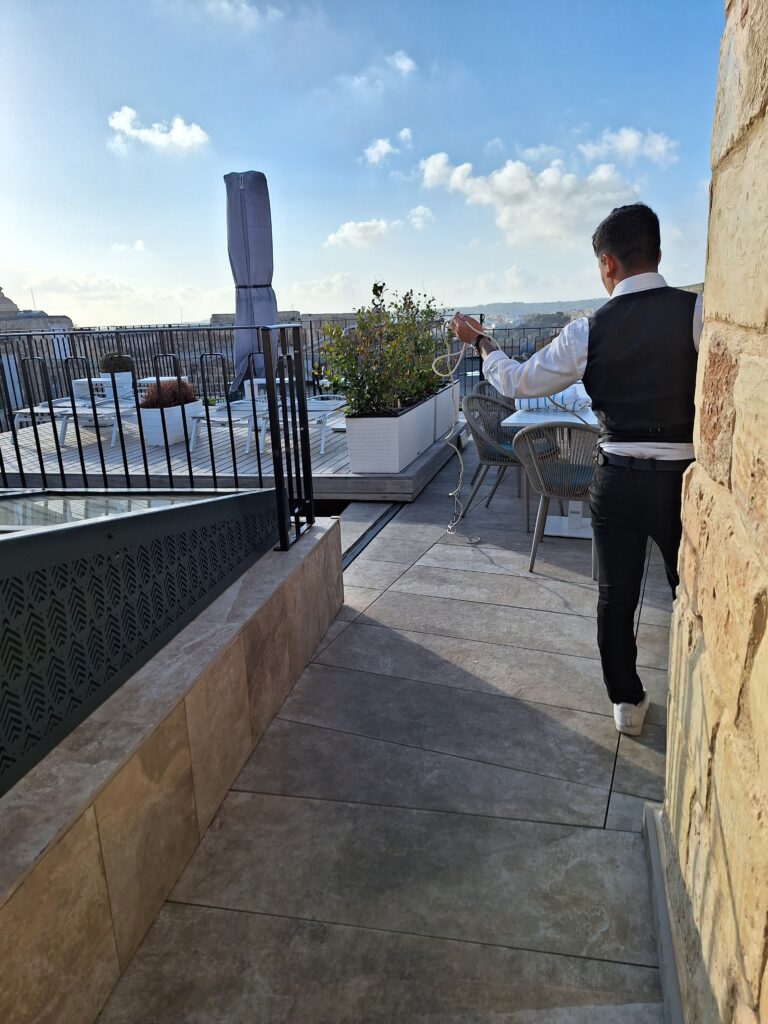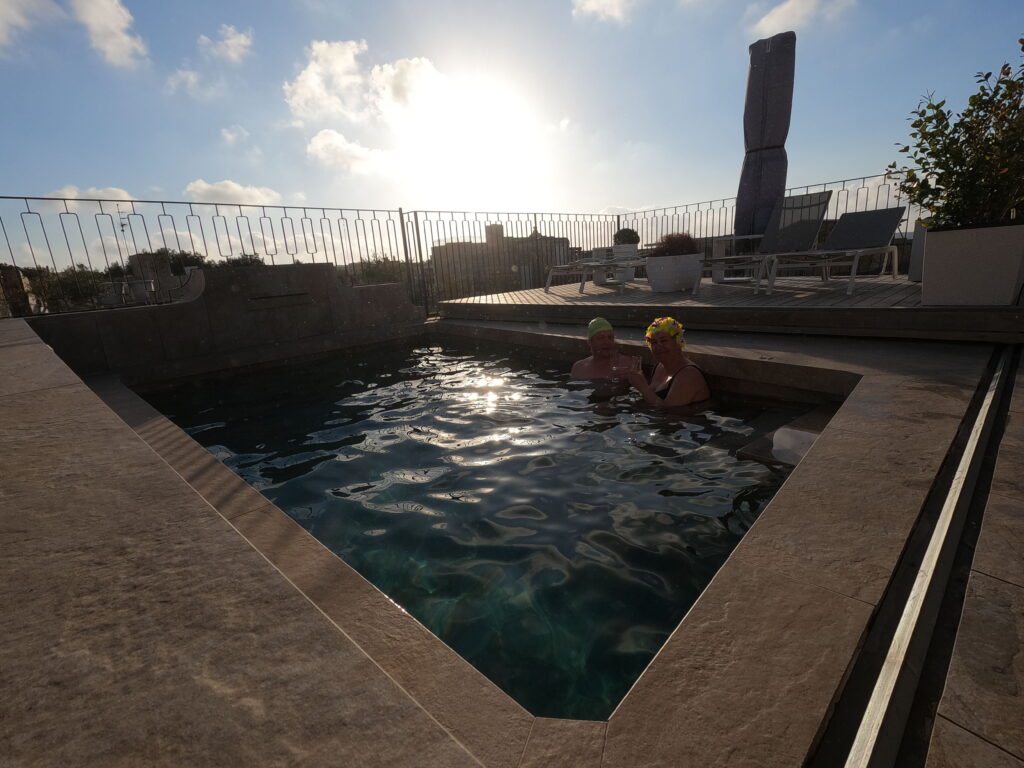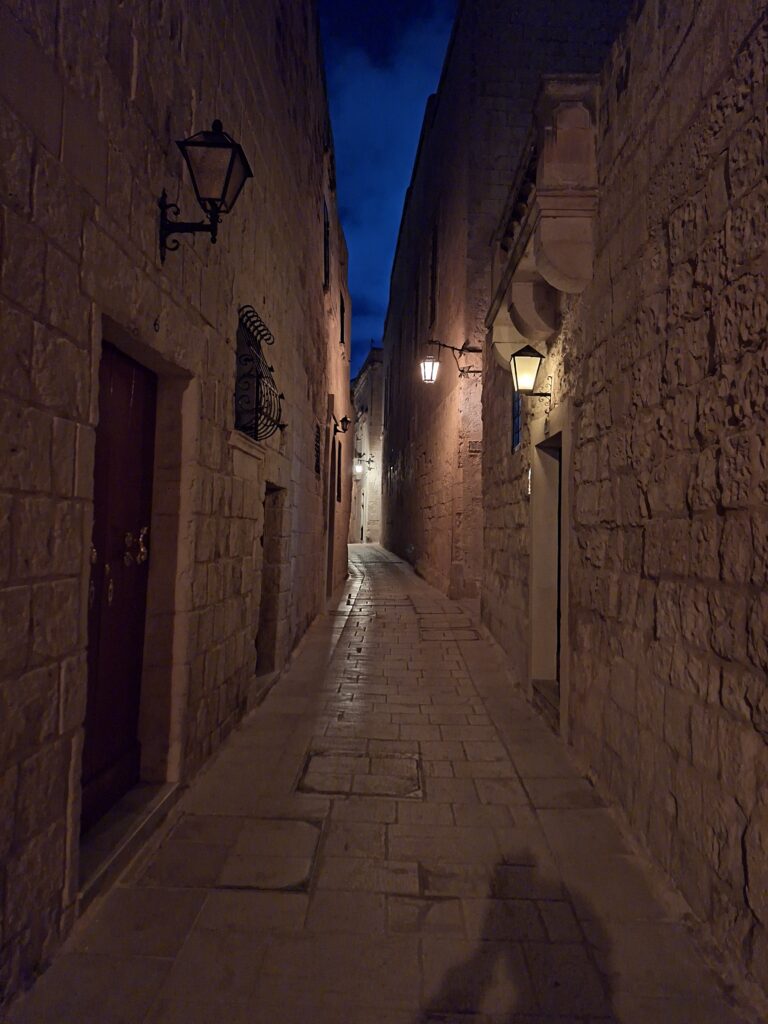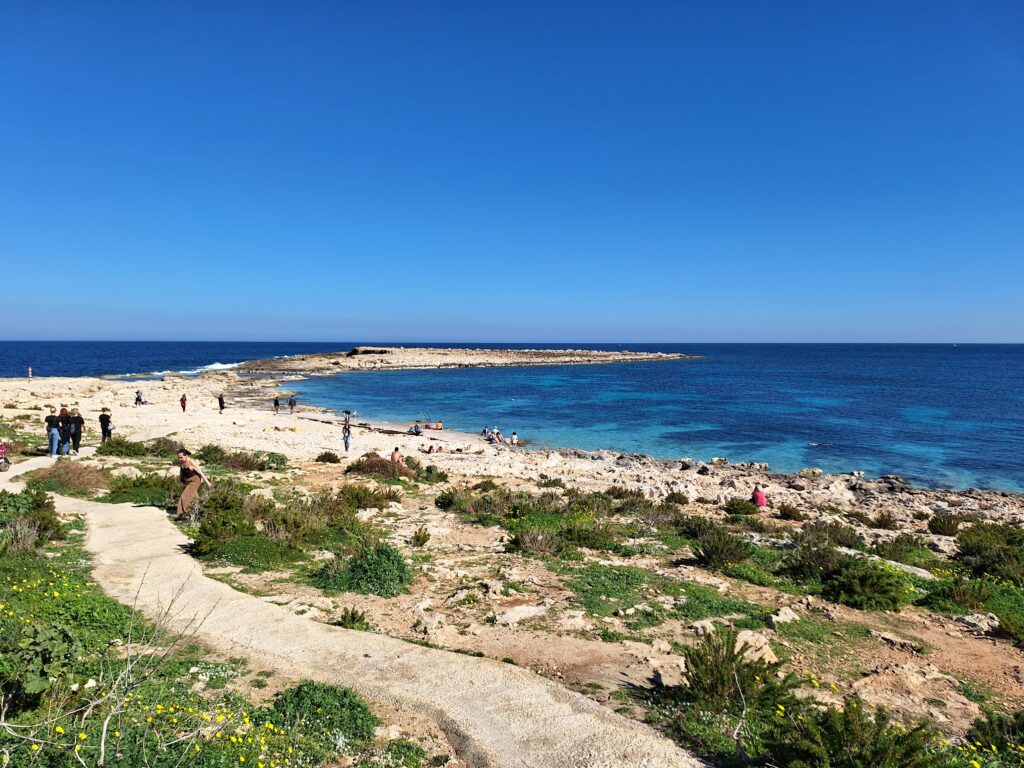
We had moved into a small apartment in Buġibba by Saint Paul’s Bay in the north of Malta, and were looking forward to swimming a lot. But it turned out not to be simple. In winter, the wind blows from the west, day in and day out. Bathing from rocky cliffs was not very tempting, and we checked alternatives instead. Farthest out on the south side of the fjord there is a district and a headland called Qawra (pronounced with a silent Q and means Crow). Maybe there could be an opportunity there?
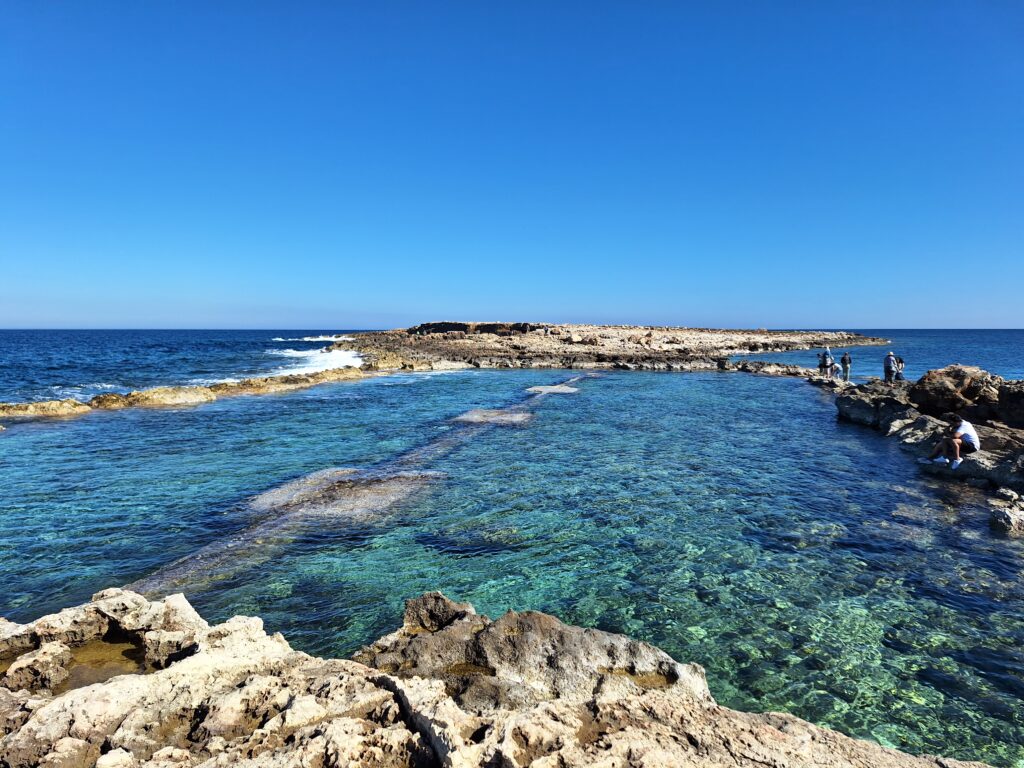
‘Business before pleasure‘ is what we often think at Tobatheornottobathe. First exploration of the place! The mysterious pool turned out to be a training target for pilots during World War II. Easily recognizable from the air. Malta, with its strategic location in the middle of the Mediterranean, was heavily bombed in the first part of the war. More than 30,000 buildings were destroyed in an island community of 250,000 inhabitants at the time.
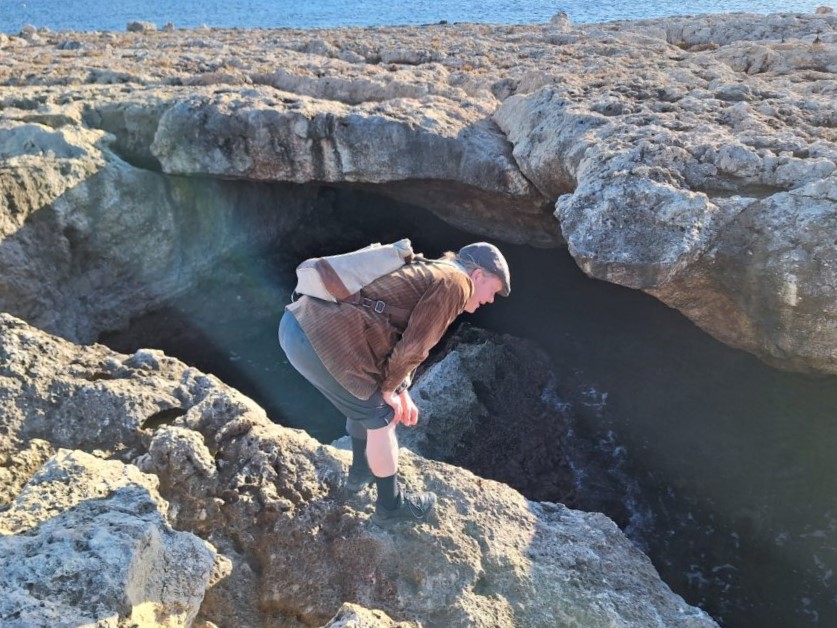
At the far end of the Qawra headland, we found a collapsed cave. Could we swim in there? The answer was an unconditional NO. There is a direct entrance from the sea to the cave, but it is so low that the waves hit the ceiling, so you would be crushed there. The alternative could be to scuba dive in – if it’s deep enough, but we don’t know how deep it is.
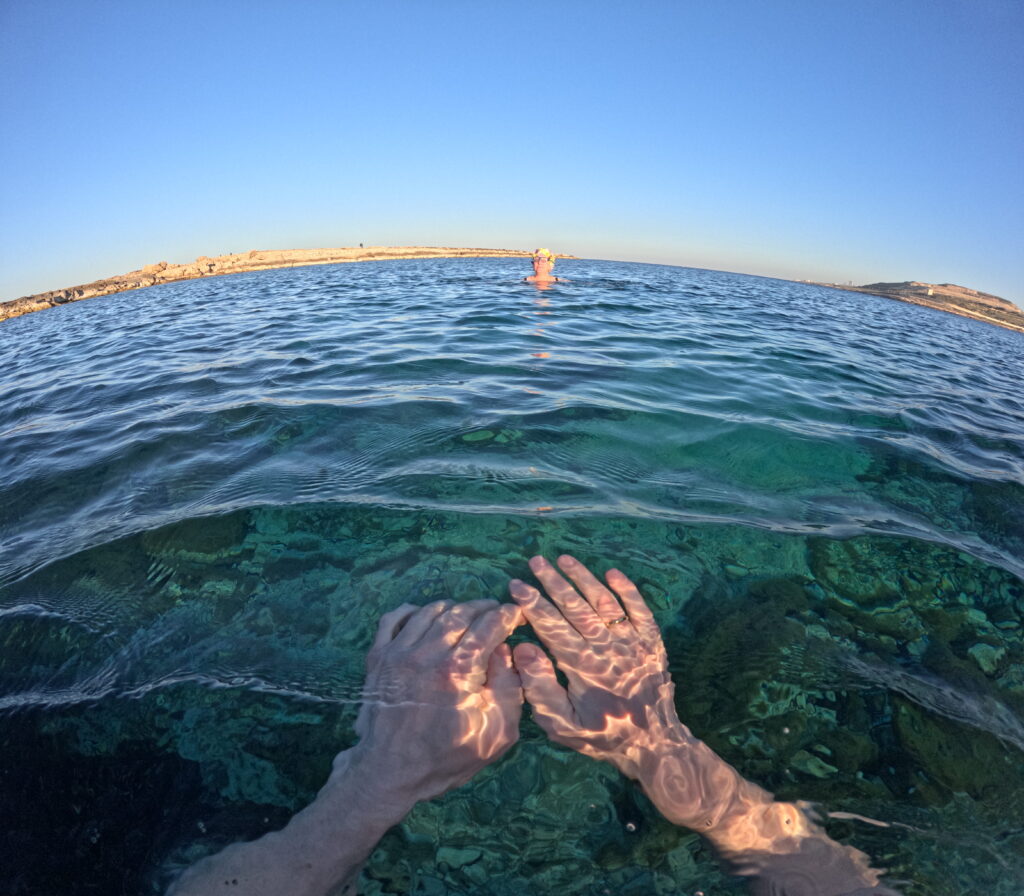
After the exploration of the Qawra headland, a bath was just right, and the bay east of the headland is actually a bathing paradise! It’s warm and nice here in both summer and winter, you just have to jump in. The bottom is varied with alternating rocks and sand, and many nice fish to see.
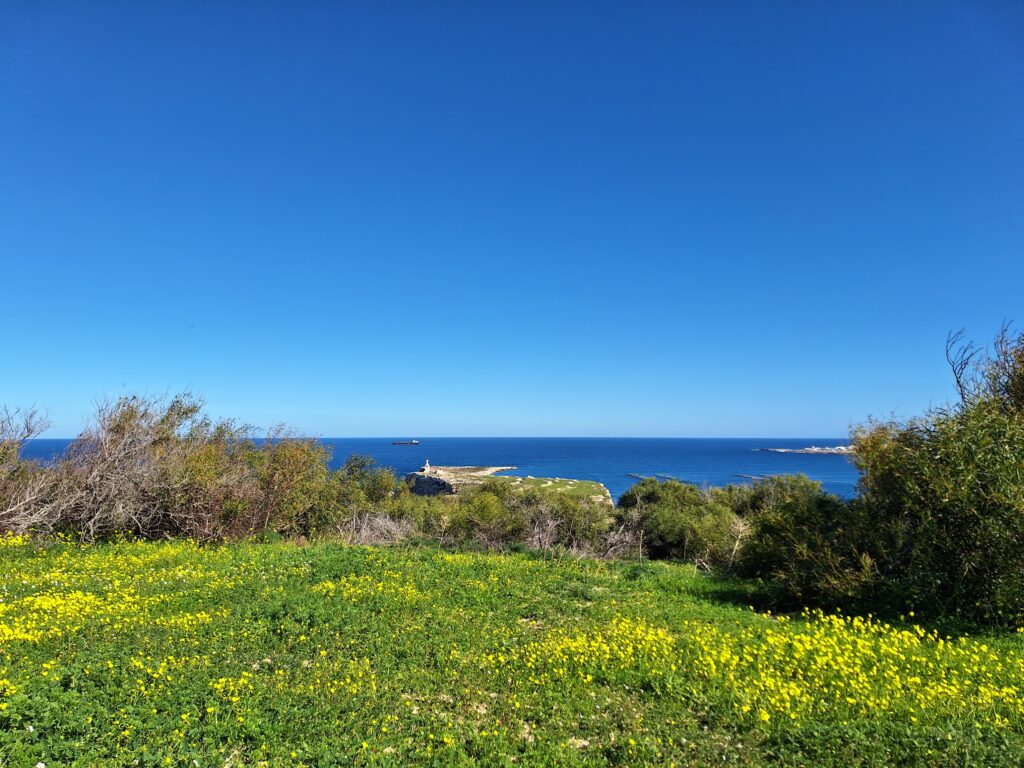
A few days later, when we were searching to find information about Saint Paul’s Island on the other side of the bay, we read that Pope John Paul II had visited the island in 1990, and in memory of this visit a statue of Jesus was lowered later that year in the sea off Saint Paul’s Island. As a diving target!
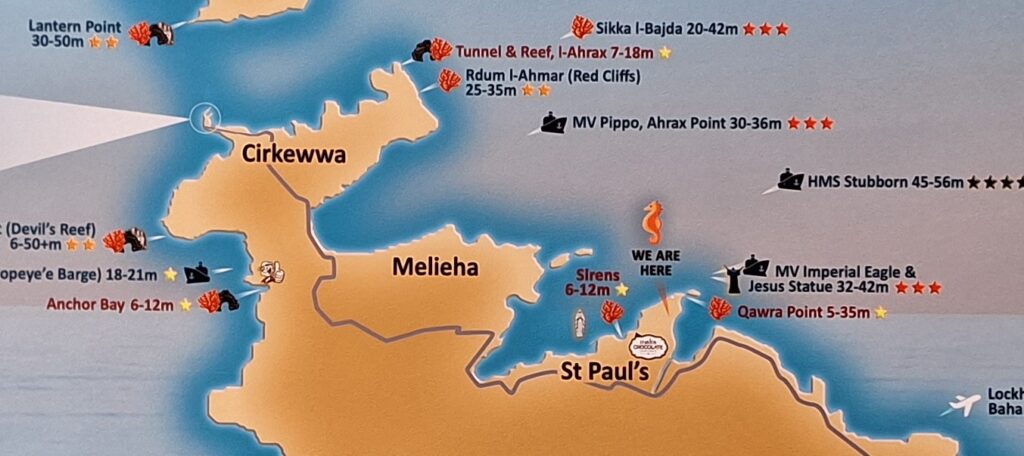
Diving destinations in Malta can be:
– Caves and arches, above or below water
– Coral reefs
– Shipwrecks, often moved to suitable depths and good diving spots – Plane wrecks
– Statues
Due to detoriating visibility and declining interest in diving, the Jesus statue was moved to Qawra headland 10 years later. This suited us very well, we would like to dive down to a statue! After some pondering, we realized that Jesus was too complicated for us, 500 meters out from the Qawra headland (in which direction?), and at a depth of 35 meters (would it be visible during freediving?). To find Jesus we needed diving equipment (which we could have rented), diving certificates (Idun doesn’t have it) and good backs (nobody in Tobatheornottobathe had that during this holiday).
But now that the idea was born – could there be other diving statues in Malta? This country is said to be the most Catholic of all Catholic countries in Europe, maybe they have made other religious diving destinations? The answer turned out to be YES. There is an abyss Madonna too!
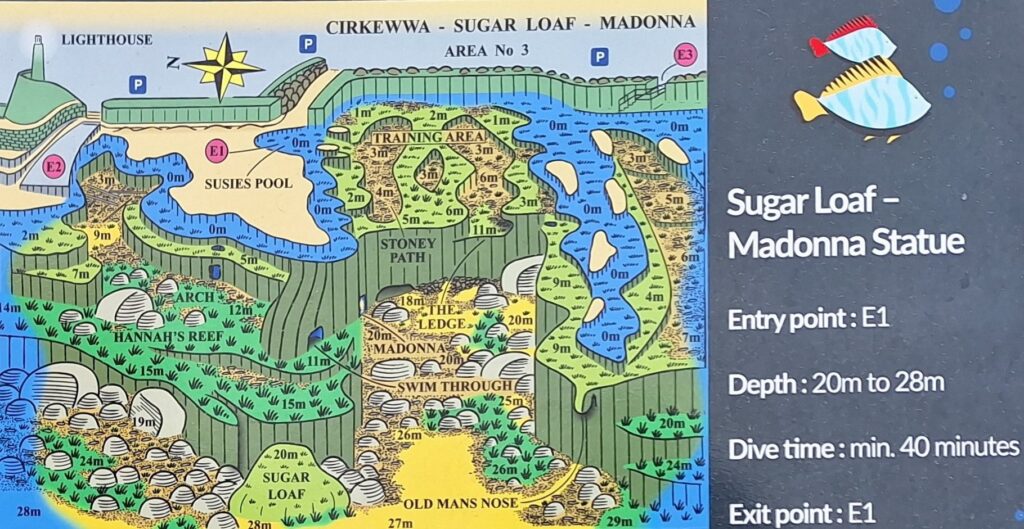
A few days later we took the bus to Ċirkewwa in the far north of the island of Malta, where the ferries go to Gozo and Comino. The name Ċirkewwa comes from the word circle, and refers to the rounded bay.
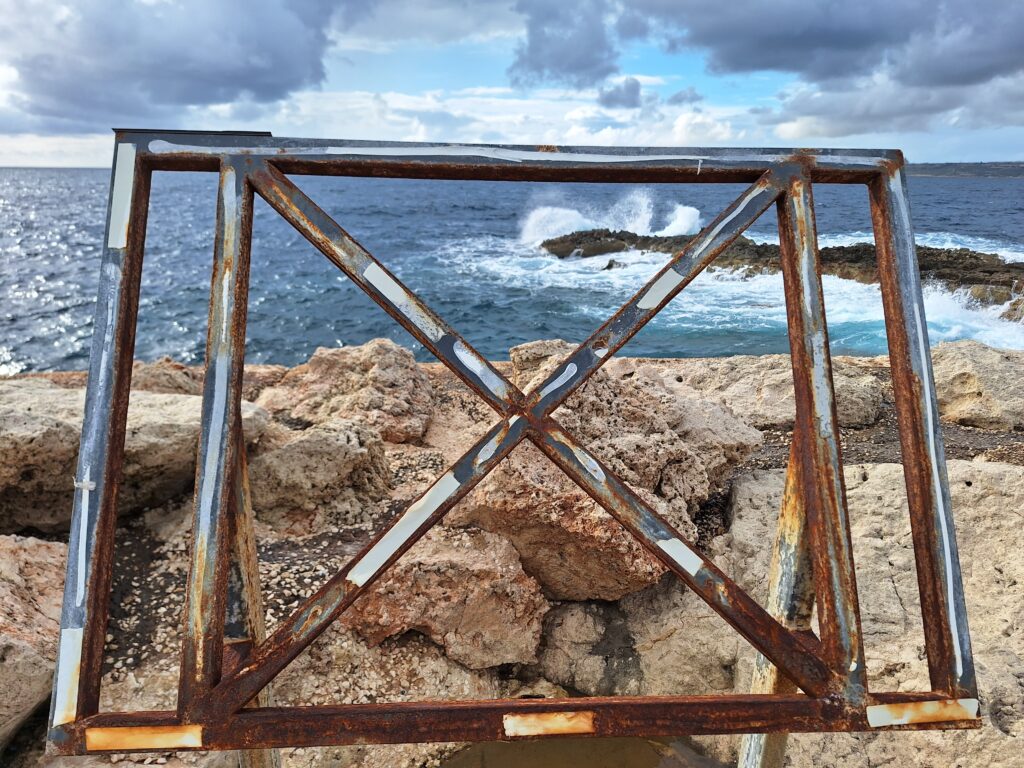
It was another non-bath. Again, we just had to accept that the winter wind was not on our side.
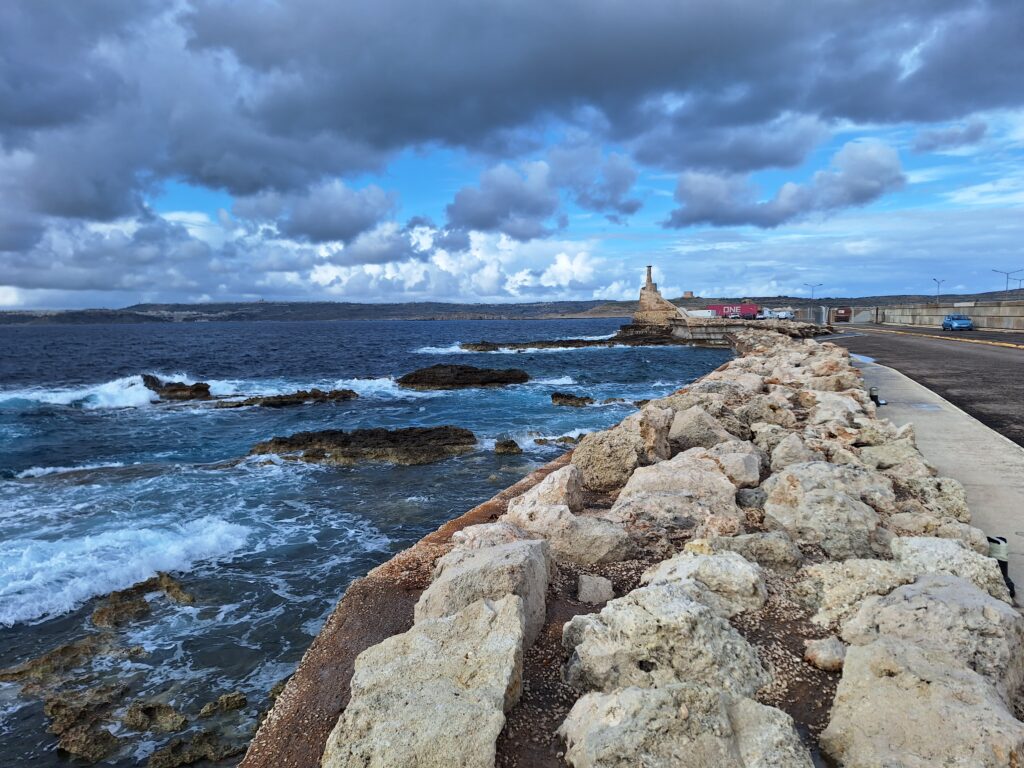
Fresh breeze from the west and seas far too rough for freedivers without a wetsuit.
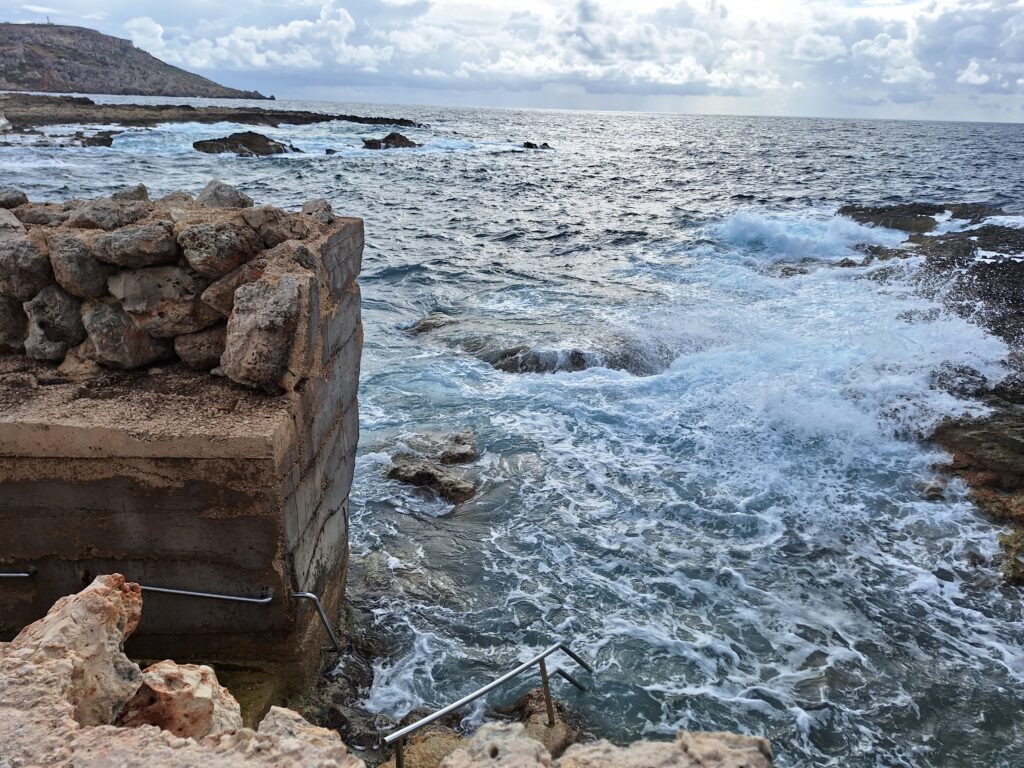
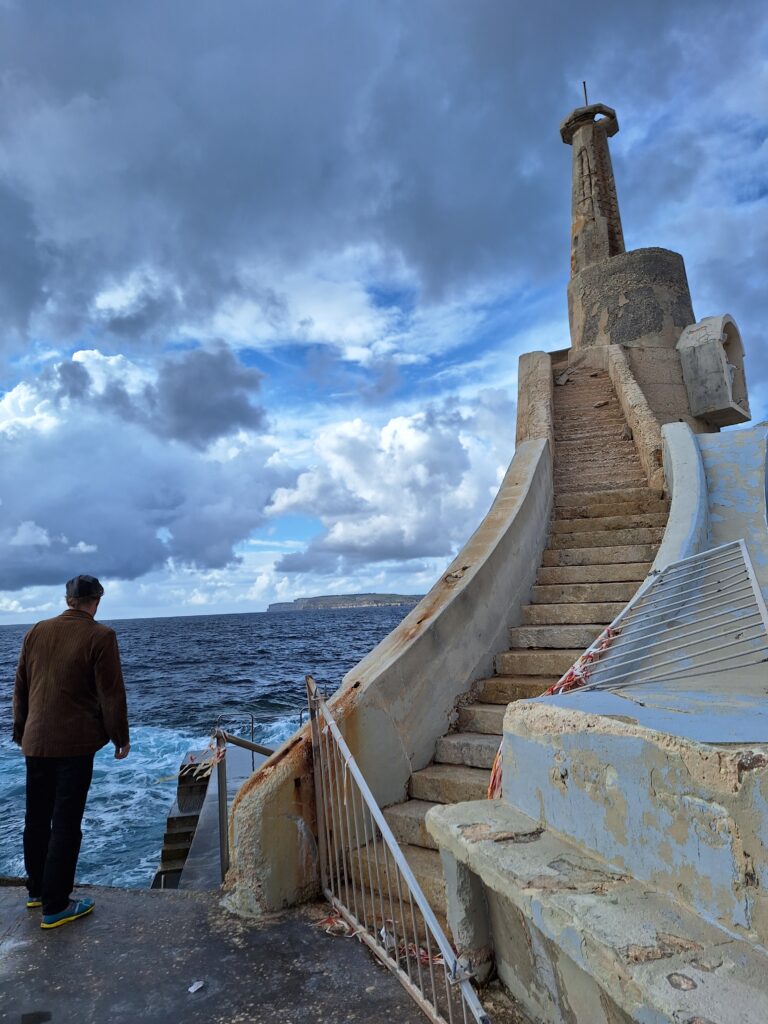
Ċirkewwa did not appear at its most attractive in February 2024, but very few ferry terminals are. However, a little more maintenance could nice, for us to be able to enter the view point.
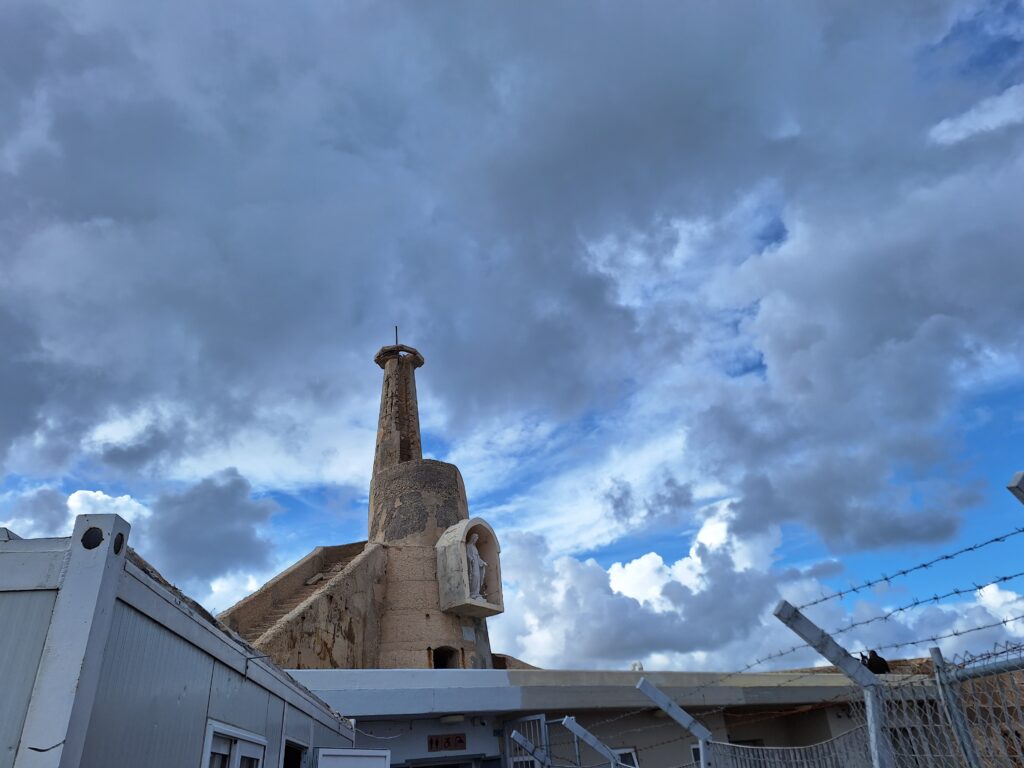
Anyway, we actually had a nice break from bathing, to the beautiful sight of splashing waves. Next time!
